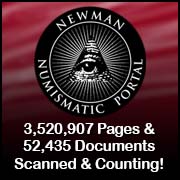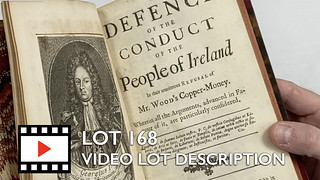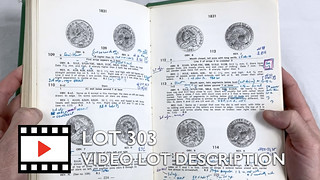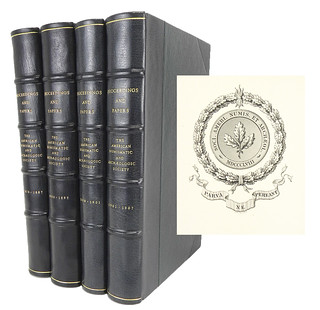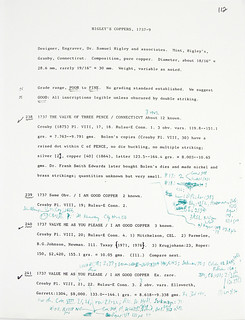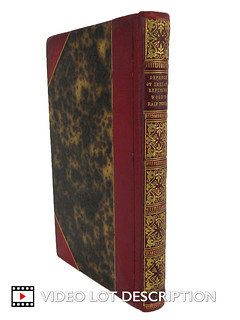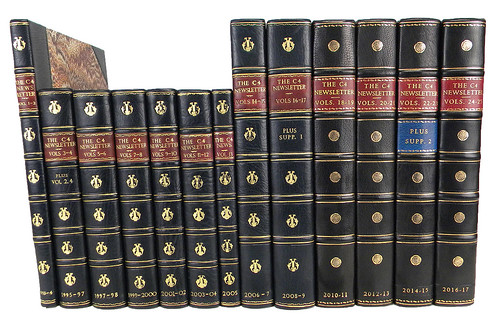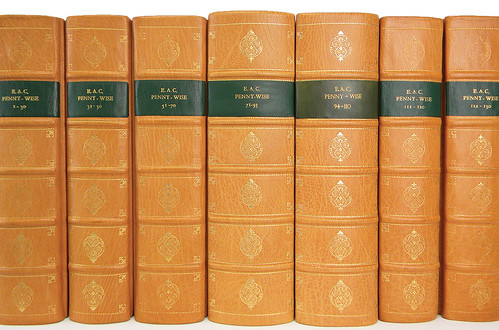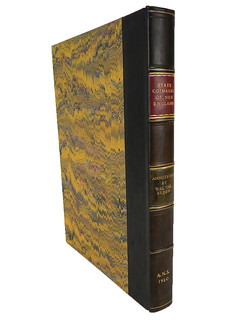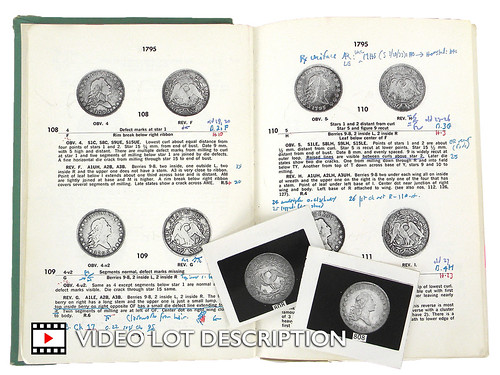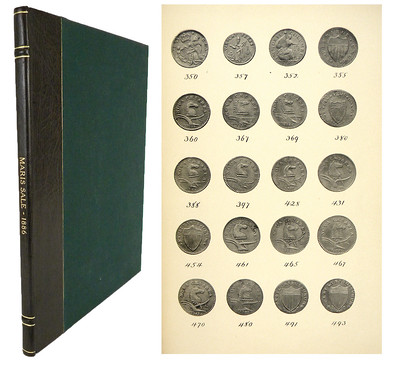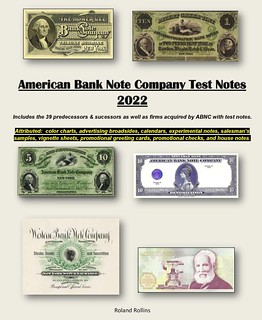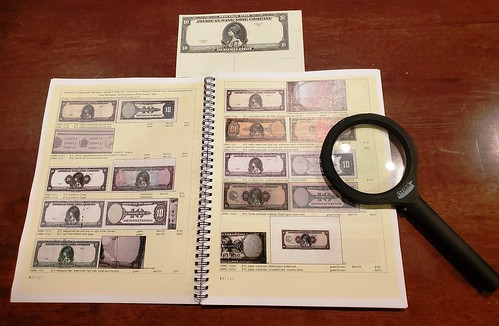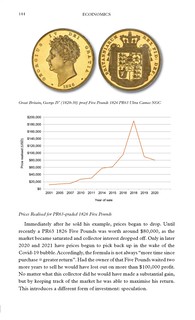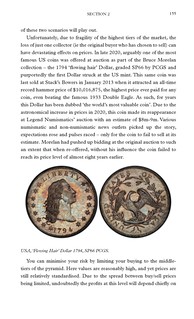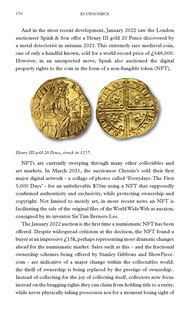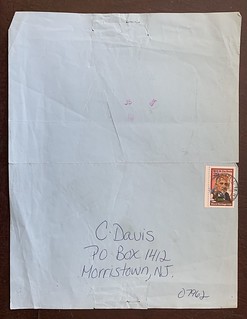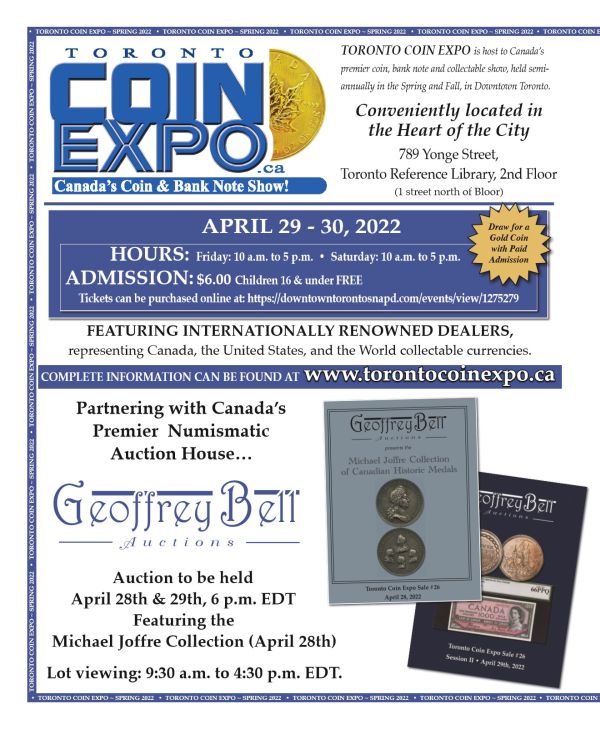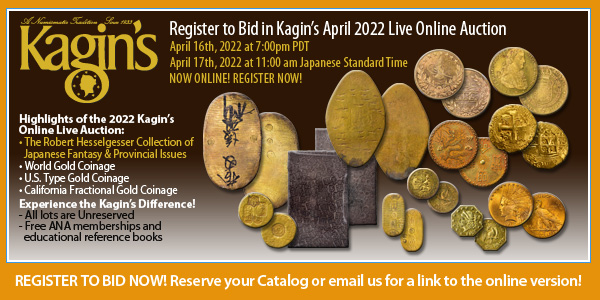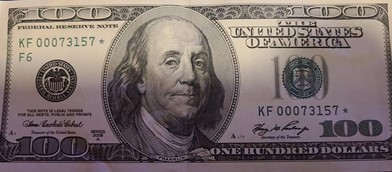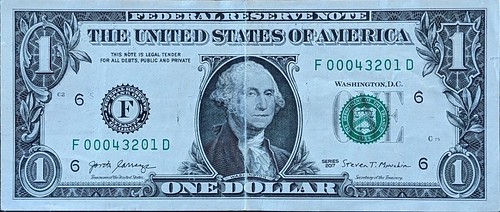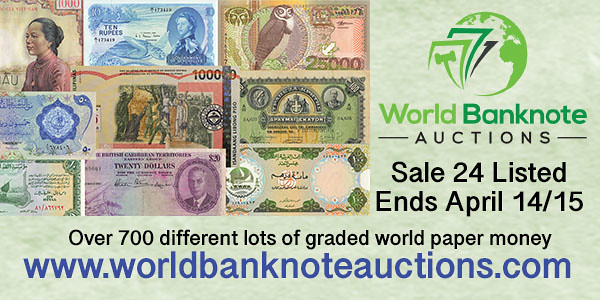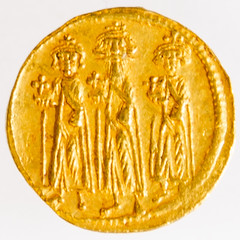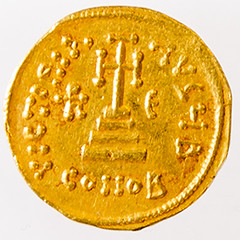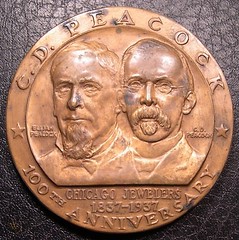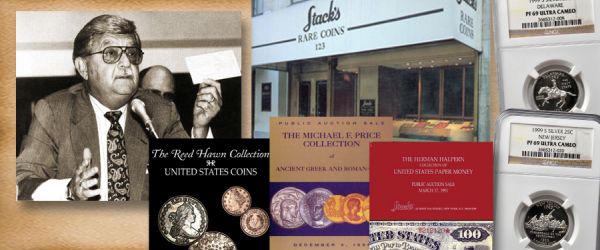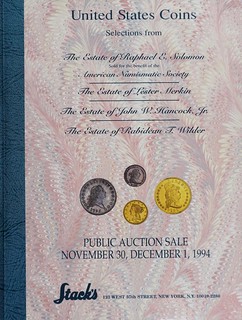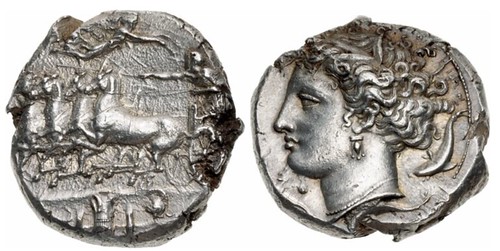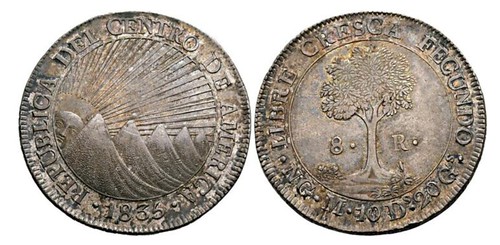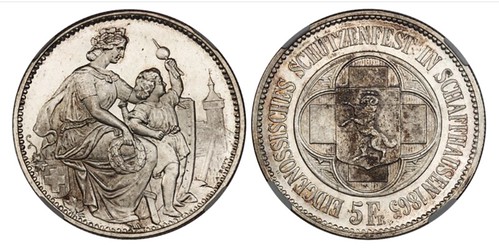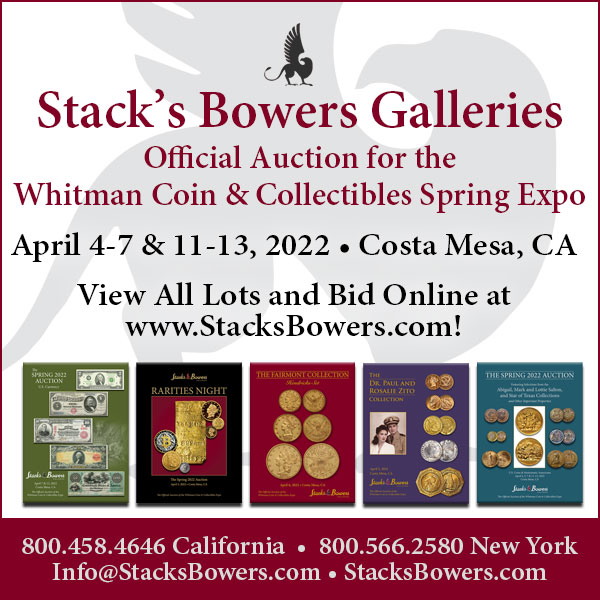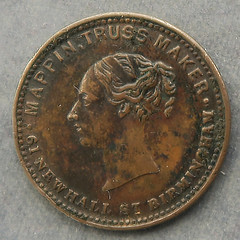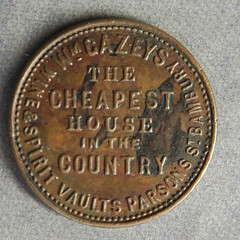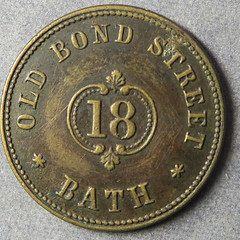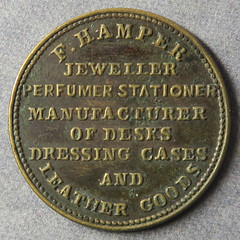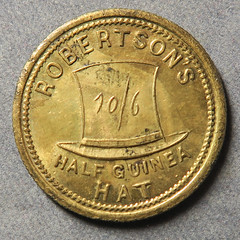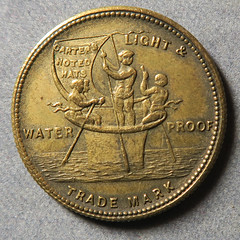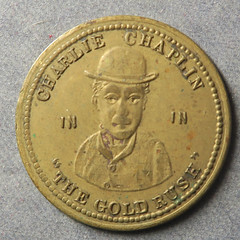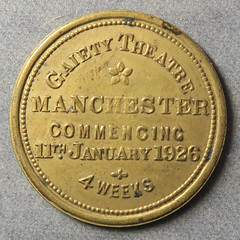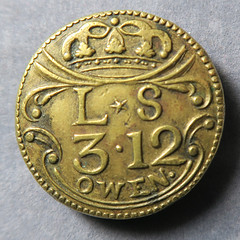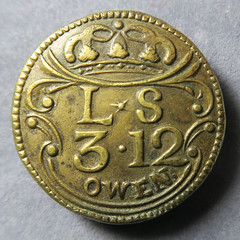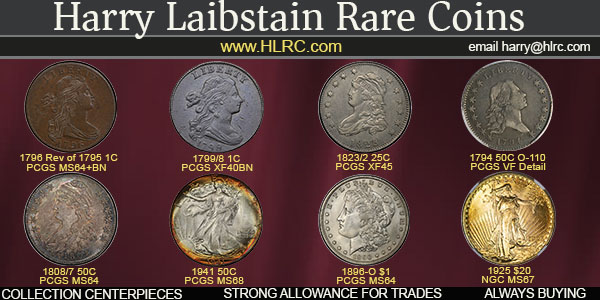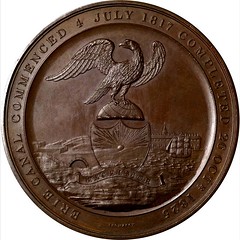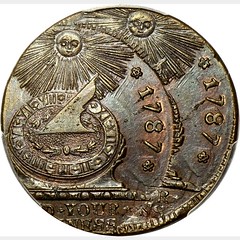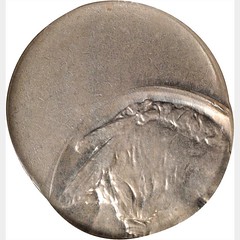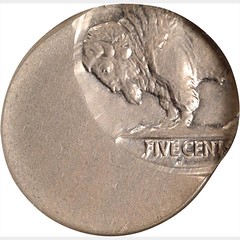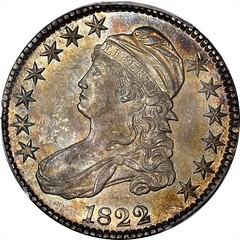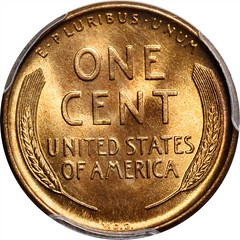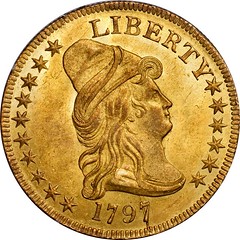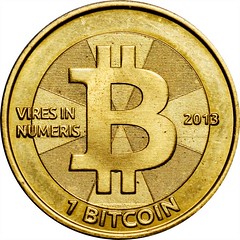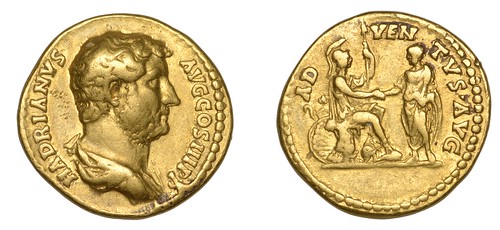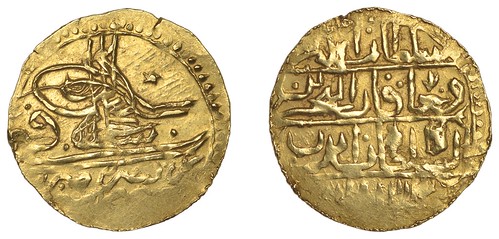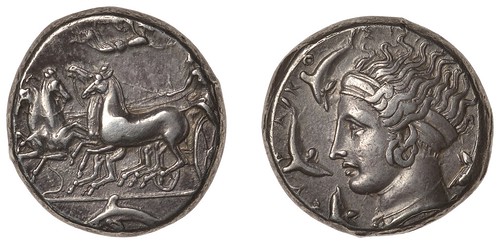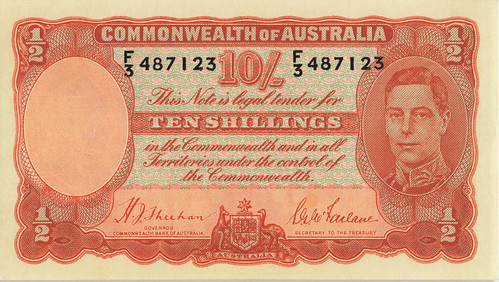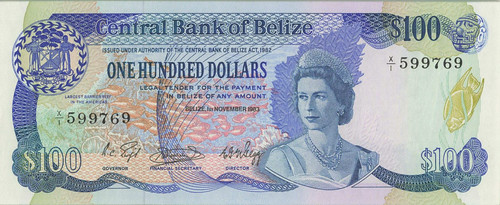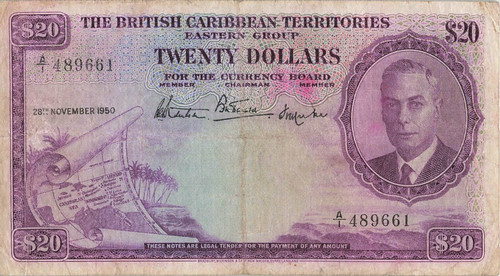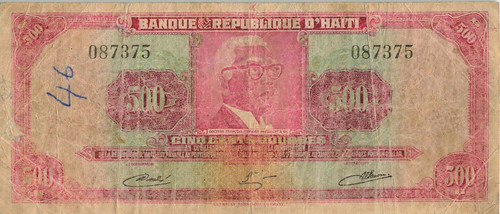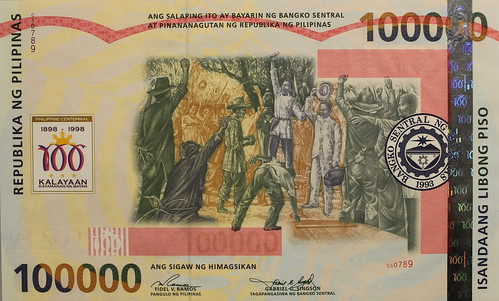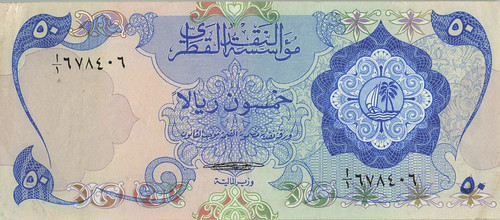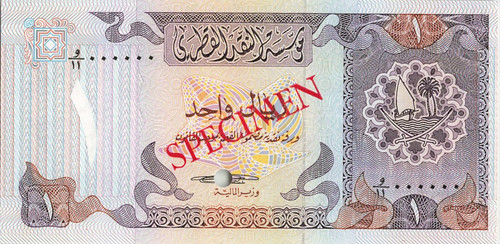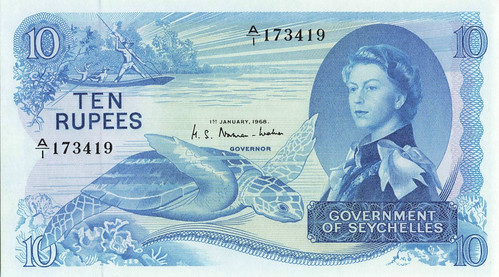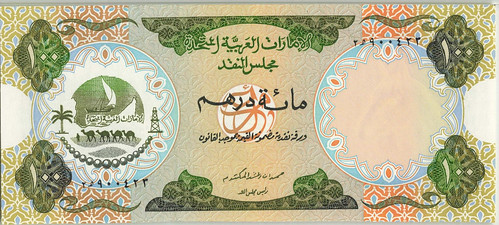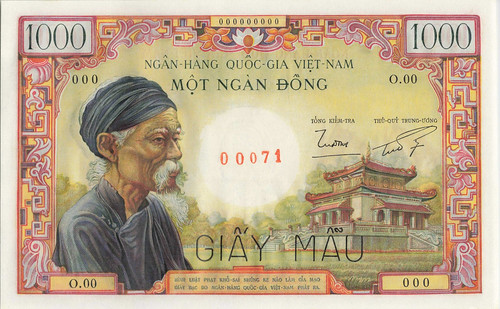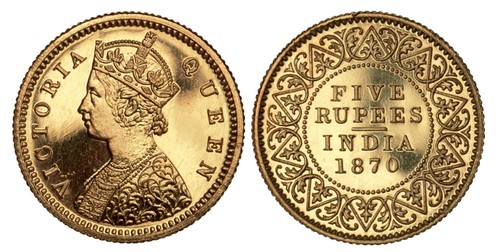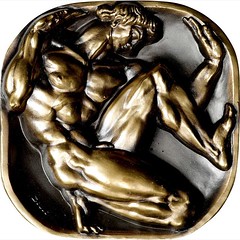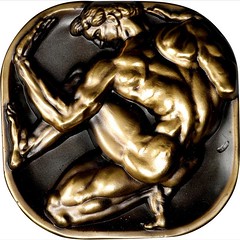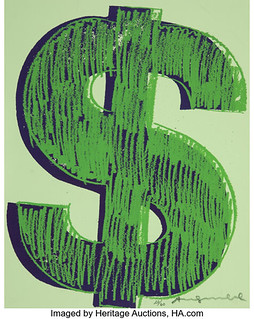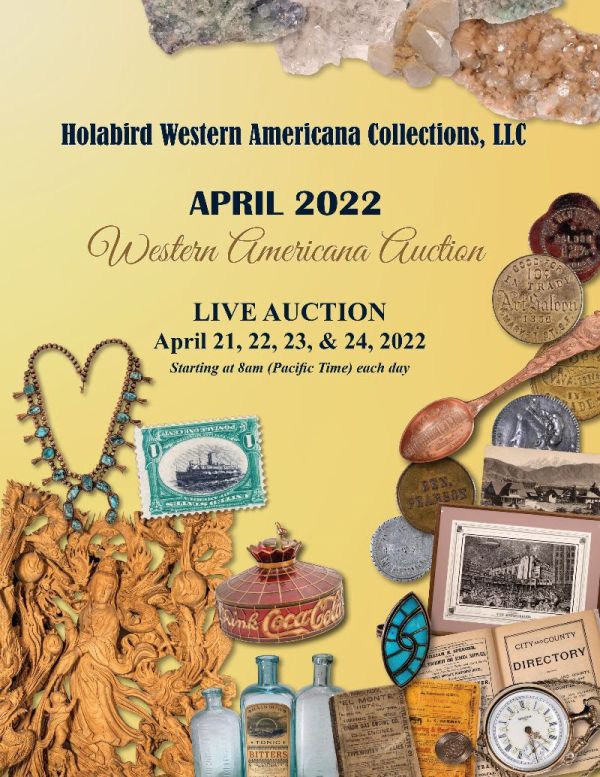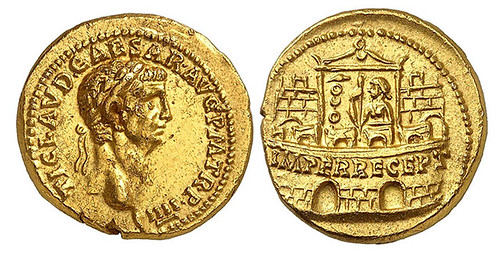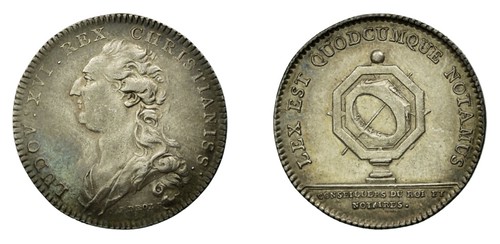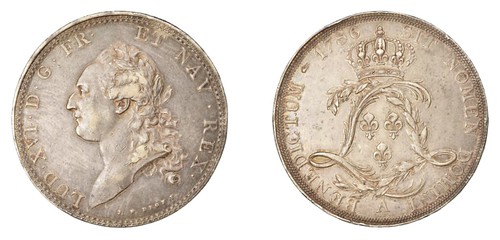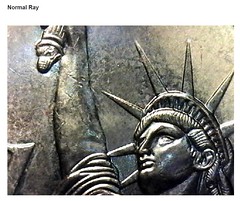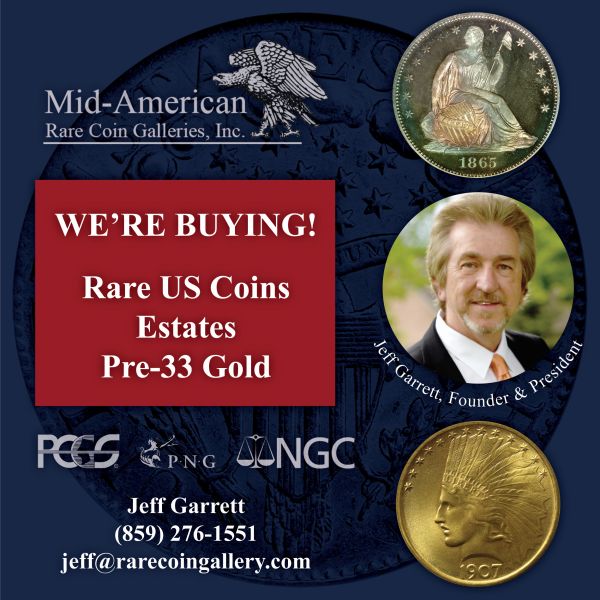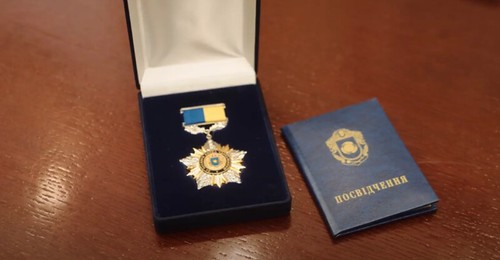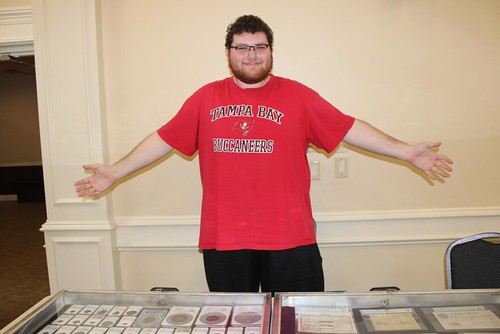
Visit our NBS Sponsors



About UsThe Numismatic Bibliomania Society is a non-profit association devoted to the study and enjoyment of numismatic literature. For more information please see our web site at coinbooks.org SubscriptionsThose wishing to become new E-Sylum subscribers (or wishing to Unsubscribe) can go to the following web page link MembershipThere is a membership application available on the web site Membership Application To join, print the application and return it with your check to the address printed on the application. Print/Digital membership is $40 to addresses in the U.S., and $60 elsewhere. A digital-only membership is available for $25. For those without web access, write to: Charles Heck, Treasurer AsylumFor Asylum mailing address changes and other membership questions, contact Chuck at this email address: treasurer@coinbooks.org SubmissionsTo submit items for publication in The E-Sylum, write to the Editor at this address: whomren@gmail.com BUY THE BOOK BEFORE THE COIN |
- WAYNE'S WORDS: THE E-SYLUM APRIL 3, 2022
- KOLBE & FANNING SYD MARTIN LIBRARY SALE
- NEW BOOK: AMERICAN BANK NOTE TEST NOTES 2022
- NEW BOOK: ECOINOMICS
- DELL LOY HANSEN SPEAKS ABOUT HIS COLLECTION
- VIDEO: THE WHITMAN BALTIMORE EXPO
- MORE ON THE 1992 M. N. DAYCIUS PRANK
- NOTES FROM E-SYLUM READERS: APRIL 3, 2022
- COLLECTING ZIP CODE NOTES
- PCGS BEGINS CERTIFYING JAPANESE FANTASY COINS
- PRINCETON ADDS THEODOTOU BYZANTINE COINS
- 2022 CHICAGO MONEY TALKS SPEAKERS WANTED
- VOCABULARY TERM: IMPRESSED DESIGN
- MORE ON BRUCE W. SMITH
- HARVEY STACK'S NUMISMATIC FAMILY, PART 118
- BRING HONEST ABE TO PAN
- ATLAS NUMISMATICS APRIL 2022 SELECTIONS
- SIMMONS APRIL 2022 TOKEN & WEIGHT AUCTION
- STACK'S BOWERS SPRING 2022 AUCTION SELECTIONS
- DNW APRIL 2022 SALE HIGHLIGHTS
- WORLD BANKNOTE AUCTIONS PRESENTS SALE 24
- NUMISMATIC NUGGETS: APRIL 3, 2022
- THE COINAGE OF CLAUDIUS
- THE ÉCU DE CALONNE
- 2007-P WASHINGTON DOLLAR ELONGATED RAY
- ZELENSKY MEDAL SALES TO HELP UKRAINIANS
- UKRAINE AWARDS MEDAL TO SALTY-TONGUED SAILOR
- CHANGE HUNTING IN 2022
- 2023 AMERICAN WOMEN QUARTERS HONOREES
- COIN DEALER MATTHEW TAVORY
- LOOSE CHANGE: APRIL 3, 2022
Click here to read the thin version on the web
Click here to subscribe
Click here to access the complete archive
To comment or submit articles, reply to whomren@gmail.com
Content presented in The E-Sylum is not necessarily researched or independently fact-checked, and views expressed do not necessarily represent those of the Numismatic Bibliomania Society.
WAYNE'S WORDS: THE E-SYLUM APRIL 3, 2022
 New subscribers this week include:
Tom Koolick,
Todd Ryan, and
Steve Wilton.
Welcome aboard! We now have 6,987 subscribers.
New subscribers this week include:
Tom Koolick,
Todd Ryan, and
Steve Wilton.
Welcome aboard! We now have 6,987 subscribers.
Thank you for reading The E-Sylum. If you enjoy it, please send me the email addresses of friends you think may enjoy it as well and I'll send them a subscription. Contact me at whomren@gmail.com anytime regarding your subscription, or questions, comments or suggestions about our content.
This week we open with a great numismatic literature sale, two new books, updates from the Newman Numismatic Portal, notes from readers, and more.
Other topics this week include test notes, the Baltimore Expo, zip code notes, Byzantine coins, auction previews, the coinage of Claudius, medals for Ukrainians, and coins and the coin hobby in 2022.
To learn more about the Thomas Warner, Dell Loy Hansen, and Princeton University Library collections, the Republic of San Serriffe, Old Copper Nose, impressed designs, James A. Stack, Sr., Waitangi Crowns, the Erie Canal Completion Medal, the She Slave medal, Andy Warhol's $, and the 2023 honorees for the American Women Quarters Program, read on. Have a great week, everyone!
Wayne Homren
Editor, The E-Sylum
THE BOOK BAZARRE
KOLBE & FANNING SYD MARTIN LIBRARY SALE
Later this month Kolbe & Fanning will be auctioning the numismatic library of researcher and author Syd Martin. Here are some highlights. -Editor
 Kolbe & Fanning Numismatic Booksellers are proud to announce that on April 30, 2022, we will be selling at auction the outstanding library formed by Sydney F. Martin. The Martin Library is among the finest formed on the subject of early American numismatics, and was painstakingly assembled over the course of more than thirty years. We are honored to have been asked to catalogue the library, having worked closely with Syd as he built it. While the focus of the library is on the early coinage of the Americas, Syd's interests were such that it by necessity includes many works on British, Irish, French and Spanish numismatics as well.
Kolbe & Fanning Numismatic Booksellers are proud to announce that on April 30, 2022, we will be selling at auction the outstanding library formed by Sydney F. Martin. The Martin Library is among the finest formed on the subject of early American numismatics, and was painstakingly assembled over the course of more than thirty years. We are honored to have been asked to catalogue the library, having worked closely with Syd as he built it. While the focus of the library is on the early coinage of the Americas, Syd's interests were such that it by necessity includes many works on British, Irish, French and Spanish numismatics as well.
Some highlights of the sale include:
Lot 14: an exceptional, finely bound set of the Proceedings & Papers of the American Numismatic Society
Lot 63: Walter Breen's working drafts of his Complete Encyclopedia, with thousands of original handwritten annotations
Lot 91: Colin's King's plated copy of the 1884 catalogue of the Thomas Warner collection, with a letter from the Chapman Brothers presenting it
Lot 168: Charles Bushnell's copy of the extremely rare 1724 Defence of the Conduct of the People of Ireland in Their Unanimous Refusal of Mr. Wood's Copper-Money
Lot 117: a set of the C4 Newsletter, exquisitely bound in very high quality black half morocco with marbled sides
Lot 158: a handsomely bound set of the first fifty volumes of Penny-Wise, the publication of the Early American Coppers club
Lot 257: Mease's 1821 Description of Some of the Medals Struck in Relation to Important Events in North America, the first publication on American numismatics
Lot 270: Walter Breen's extensively annotated copy of Miller and Ryder on the state coinage of New England, with hundreds of comments, additions and corrections
Lot 303: Breen's copy of the revised 1970 edition of Overton of early half dollars, with every page of variety descriptions annotated in extraordinary detail
Lot 354: a finely bound copy of the legendary 1886 Maris collection sale, one of only a small number issued with six fine photographic plates.
Register early to bid online
Bids may be placed via post, email, fax or phone, as well as online. Kolbe & Fanning use Auction Mobility as our third-party online bidding platform. Auction Mobility is an app-based platform allowing users the ability to participate in the sale through phones, tablets and computers. To register for the sale, bidders must go to
bid.numislit.com and sign up. Once you have set up an account, you may browse lots, place advance bids, or participate in the live sale online. Those wishing to participate on their devices can download the Kolbe & Fanning app through the Apple or Google Play Store. The sale will also be listed on Biddr and NumisBids in the near future.
The printed catalogue of the Martin Library will soon be mailed to all active customers on our mailing list. As international mail speeds have been slow in recent months, we encourage our international clients to consult the electronic catalogue in case their printed catalogue does not arrive promptly. A PDF of the printed catalogue has been posted to our main website at numislit.com for those who prefer that format. Bids placed via post, email, fax or phone must be received by April 29, the day before the sale, in order for them to be processed. Advance absentee bids may also be placed at any time online at bid.numislit.com. Live internet bidding will be available during the sale itself through the same platform.
Kolbe & Fanning Numismatic Booksellers LLC is a licensed and bonded auction firm in the State of Ohio. For more information, please see the Kolbe & Fanning website at numislit.com or email David Fanning at df@numislit.com. To register for the sale, go to bid.numislit.com. We look forward to your participation.
To read the .pdf catalogue, see:
https://www.numislit.com/images/upload/kolbefanningsale163.pdf
NEW BOOK: AMERICAN BANK NOTE TEST NOTES 2022
Roland Rollins has just published a new book on American Bank Note Company test notes. -Editor
American Bank Note Company Test Notes
This catalog attributes all test notes of printers American Bank Note Company and its predecessors and firms bought out.
- Covers all test, advertising, promotional, color samples and house notes for firms involved in the production of bank notes.
- Released March 2022. The first catalog in 2019 sold out in three months. View the sample pages.
- Spiral bound book to lay flat while open, no breaking the binding.
- UV (ultraviolet), close up, and sharp angle images to show security features present.
- Current valuations in uncirculated or best known condition for all notes.
- 109 pages - 84 in 2019!
- All COLOR NOTE IMAGES, attributing all sub-varieties, such as date, logo, address, color, material, security device differences, and others.
- All 39 known printer firms producing test notes, including Printer's test, house and advertising notes from the 1820's forward. There were 27 firms in the 2019 book!
- Images of 95+% of each test note set.
- Only test note catalog for the American Bank Note Company.
- Table of Contents lists Firm, number of unique cataloged notes, number of sub-varieties and comments. Now also shows the alpha catalog designation for each firm.
- Cross reference "family trees" of all firms that formed the American Bank Note Company.
Roland adds:
"It is available on eBay for $25 plus $4.50 media mail shipping. You can use PayPal or check and save some shipping by ordering from my web site."
For more information, or to order, see:
http://currency_den.tripod.com/testnotes/order.html
Book - American Bank Note Company Test Notes, 2022
(https://www.ebay.com/itm/194945503651)
NEW BOOK: ECOINOMICS
A new book by Robert Parkinson called Ecoinomics gives an explanation of the global numismatic market and how coins perform as stores of value. Here's the press release. -Editor
Ecoinomics - the ultimate guide to investing in real-life coins
 A new book due out this spring aims to provide would-be investors with valuable insights into the highly lucrative coin market.
A new book due out this spring aims to provide would-be investors with valuable insights into the highly lucrative coin market.
As the crypto-currency sector continues to grow, author Robert Parkinson makes a very strong case for real-life coins as an exciting investment opportunity.
Billions of dollars change hands for rare coins each year, even in the hardest of times,
said Parkinson. During the global pandemic the coin market remained extremely buoyant - even when the FTSE 100 and Dow Jones were both down by 20 per cent.
Physical coins occupy a unique niche in the alternative asset market. They are bought both as luxury collectables and as ‘safe haven' investments, and combine the satisfaction of acquiring a beautiful and historic possession with the rewards of owning a valuable commodity.
Few books have been written about the investment potential of coins, with most concentrating instead on the collectors' market, according to Parkinson. Many people are fascinated by coins and are excited to acquire their own tangible tokens, ones that have changed hands multiple times throughout history,
he said.
Ecoinomics is designed to give novice collectors the confidence to dip a toe into the numismatics market while also providing insights to industry professionals on the specifics of buying and selling coins.
Ecoinomics deals with a number of wide-ranging topics including the costs and benefits of keeping a substantial amount of capital in coins; market trends; tax issues; insurance cover and how the market differs from country to country.
Max Spiegel, President of the Certified Collectibles Group/NGC, describes Ecoinomics as a valuable resource for both new and experienced collectors. Robert Parkinson has written an interesting and informative guide that explains many of the most important topics in numismatics,
says Spiegel in his review.
Ecoinomics is published by Spink Books and is due out in April. It will be available via Amazon, WH Smith, Blackwells and through all other reputable booksellers.
ISBN number: 9781912667789
Topics covered in Ecoinomics include:
Section 1: The Numismatic Market
- A brief history of coins and the origins of the numismatic trade.
- The various factors that contribute to coin values and create collector demand.
- Third party certification and how it has revolutionised the trade as well as the criticism it faces.
- How collecting practices vary from region to region and the predominant market types around the world.
- The range of participants in the numismatic market and how they interlink.
Section 2: Coins as an Asset Class
- The tools available that allow collectors to research and track changes in coin prices and values.
- How coins perform as assets and the range of strategies one can employ to maximise returns on coin purchases.
- The risks involved with individual coins and the intricacies of the numismatic market as a whole.
- Costs and fees associated with numismatic trading.
- How coins compare both to traditional and alternative investment types.
Section 3: Trading Coins
- The various resources one can use to further one's knowledge and prepare for numismatic trading.
- An in-depth discussion of the numerous means of assessing coin quality and identifying forgeries.
- The range of options available for purchasing coins and the advantages and drawbacks of each.
- The various ways one can sell one's coins to maximise their return.
About the author:
Robert Parkinson has collected coins since childhood. He worked for historic auction house Spink and Son and US multinational Heritage Auctions before taking up his current post as Senior Numismatist for Sovereign Rarities in June 2020. He writes a regular monthly column for the UK's biggest-selling numismatic magazine, Coin News. Ecoinomics is Parkinson's first book.
For more information, or to order, see:
https://ecoinomics.co.uk/
DELL LOY HANSEN SPEAKS ABOUT HIS COLLECTION
Newman Numismatic Portal Project Coordinator Len Augsburger provided the following report on the upcoming NNP Symposium. Thanks. -Editor
Dell Loy Hansen Speaks About His Collection
 We'll be featuring an interview with Dell Loy Hansen during the upcoming Newman Portal Symposium, April 8-10. Following the interview we will have a live Q&A with John Brush, who has been instrumental in building the Hansen collection. In only a few short years, Hansen has nearly duplicated the Eliasberg collection, and in many ways surpassed what was billed as the only complete collection of United States coins ever formed.
We'll be featuring an interview with Dell Loy Hansen during the upcoming Newman Portal Symposium, April 8-10. Following the interview we will have a live Q&A with John Brush, who has been instrumental in building the Hansen collection. In only a few short years, Hansen has nearly duplicated the Eliasberg collection, and in many ways surpassed what was billed as the only complete collection of United States coins ever formed.
Other presenters at the Symposium include Wayne Homren, speaking on Civil War numismatics, and Steve and Ray Feller, who will present an overview of Holocaust money. Doug Mudd will also be on hand, speaking about the new ANA exhibit, which is anchored by the Baker/Manley collection of Washingtonia. This event is held virtually via Zoom and begins this Friday. Free registration is required.
Image: Dell Loy Hansen, holding Louis Eliasberg's smoking pipe
Link to Newman Portal Symposium registration:
https://nnpsymposium.org/
VIDEO: THE WHITMAN BALTIMORE EXPO
These are selections from the David Lisot Video Library that feature news and personalities from the world of coin collecting. David has been attending coin conventions since 1972 and began videotaping in 1985. The Newman Numismatic Portal now lists all David's videos on their website at:
https://nnp.wustl.edu/library/multimediadetail/522852
Here's one on the Whitman Baltimore Expo. -Editor
Whitman Expo Celebrates 50 Years of Bringing Coin Collectors Together.
VIDEO: 3:55.
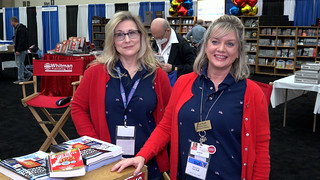 Lori H. Kraft & Dawn Burbank, Whitman Expos,
Lori H. Kraft & Dawn Burbank, Whitman Expos,
David Lisot, Interviewer, CoinTelevision.com.
Mar 31-April 2, 2022.
The Whitman Expo in Baltimore is 50 years old. Hear the story of one of America's oldest coin conventions and what collectors may hope to find when they attend.
David adds:
"The Whitman Expo takes place in Baltimore three times a year. It is a who's who for dealers wanting to be known for a national presence. Hear from two of the ladies who make the Expo happen. They are great promoters of numismatics."
An excerpt of the video is available for viewing on the Coin Television YouTube Channel at:
https://youtu.be/5PLFEOPCIrY
MORE ON THE 1992 M. N. DAYCIUS PRANK
Charlie Davis writes:
"It hit me several days ago that Len Augsburger's article on the April fools prank mendacious
flyer represented a rebirth of a 30 year old cold case. The dastardly devil has never been identified. I remember well a phone call at the time from John Adams asking if I had received the flyer which I had not as I was out of town. He described it to me and I asked if the envelope gave any clues. He said they could not find it and had all the waste paper baskets in the office dumped on the floor and staff were sifting through it with no luck. It was not until I returned home and found my copy that I realized there was no envelope as it was a single sheet folded over, stapled and mailed.
"In addition to John Ford, Armand Champa was taken in by the hoax, especially as B Max Mehl was his idol. When it became apparent he'd been duped, he commissioned a Dallas photographer to go to the address and take photos of the building in several views - Mehl's poorly preserved office. As I remember he had copies made in small and larger format, one of which he presented to me and which now graces my office wall. Len's illustration was of one side of the flyer and it would interesting to see other recipients send in scans of the address side of theirs. Sort of like laying together all known 1804 dollars or 1913 Liberty Head nickels out for comparison. Perhaps a poll could be conducted to see who we think was the jokester."
Pete Smith writes:
"I was interested in the posting last week from Sam E. Coudin from Montreal. I wondered if he might be related to Elise Coudin who received a Ph.D. from the University of Montreal in 2007.
"She is an economist noted for her paper Finite-sample generalized confidence distributions and sign-based robust estimators in median regressions with heterogenous dependent errors.
"I am not as comfortable with Canadian biographical sources as I am with American sources. I contacted Sue C. Damion, membership secretary at the Numismatic and Antiquarian Society of Montreal. She was able to provide a little information about Coudin. I also wrote to the email address published in The E-Sylum.
"Sam collects Canadian municipal trade tokens. He is also expanding into twenty-first century commemorative issues from the Canadian Mint as his funds permit.
"I asked Sam for some biographical information and he asked me for a DNA sample. I declined his request and he declined mine."
Some pranks just keep on giving. Here's the address portion of my flyer. I was living elsewhere in Pittsburgh at the time, but used this address for my book business correspondence. -Editor
I'm pretty sure this April 1st announcement from the National Park Service isn't for real... -Editor
 As the Lincoln Memorial approaches its 100th anniversary in May of this year, the National Park Service has unveiled a proposal to ensure the preservation of the colossal statue of the nation's 16th president well into its second century. Under a plan announced this morning, the seated marble figure of Abraham Lincoln would be rotated 180 degrees, so that the backside of the statue would face the colonnaded entrance to the memorial.
As the Lincoln Memorial approaches its 100th anniversary in May of this year, the National Park Service has unveiled a proposal to ensure the preservation of the colossal statue of the nation's 16th president well into its second century. Under a plan announced this morning, the seated marble figure of Abraham Lincoln would be rotated 180 degrees, so that the backside of the statue would face the colonnaded entrance to the memorial.
Preservationists are concerned that the statue, constantly subject to the elements in the open-air memorial and exposed to direct sunlight each morning, is aging unevenly and the front may eventually fade, not unlike DaVinci's The Last Supper or Coolidge's Dogs Playing Poker.
Rather than let nature continue to take a toll on Daniel Chester French's masterpiece, the National Park Service convened a blue-ribbon panel of historic architects, art conservators and HGTV interior decorators to study the process and make recommendations. Their exhaustive report, presented to the National Park Service on President's Day, outlines their preferred alternative for protecting the statue.
In the summer of 2022 the National Park Service would rotate the statue 180 degrees, so that the back of the statue would face the chamber's entrance, and the front of the statue would face the memorial's back wall. This action would not only relieve the front features from ongoing deterioration but would give the public an opportunity to admire some of the lesser-known features of the statue that are often overlooked, including Lincoln's wavy hair and the United States flag draped over the back of the chair upon which Lincoln is seated.
Less popular was the commission's alternate proposal, which would place the statue on a turntable, allowing it to be rotated throughout the day. Officials dismissed the more expensive Lazy Susan Proposal as dizzying
and too Las Vegas.
To read the complete article, see:
National Park Service Announces Plan to Turn Abraham Lincoln Statue Around
(https://www.nps.gov/nama/linc01.htm)
Quick Quiz: Who can tell us numismatic connections to the republic of San Serriffe? -Editor
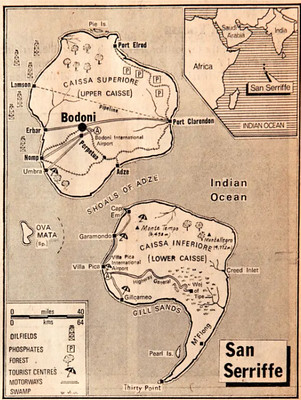 And today is April Fools Day, a day for the celebration of practical jokes. One of the best was played by The Guardian newspaper in London 1977. They published a 7 page supplement commemorating the anniversary of the independence of San Serriffe, a completely imaginary small island nation in the Indian ocean. The nation consisted of 2 main islands which together form the shape of a semicolon. The larger island was called Upper Case and the southern island called Lower Case. The day it was published The Guardian was flooded with calls for more information, including calls from travel agents and airline companies.
And today is April Fools Day, a day for the celebration of practical jokes. One of the best was played by The Guardian newspaper in London 1977. They published a 7 page supplement commemorating the anniversary of the independence of San Serriffe, a completely imaginary small island nation in the Indian ocean. The nation consisted of 2 main islands which together form the shape of a semicolon. The larger island was called Upper Case and the southern island called Lower Case. The day it was published The Guardian was flooded with calls for more information, including calls from travel agents and airline companies.
On this day in 1992 NPR announced that Richard Nixon was running for President again. They crafted a fake sound bite of Mr. Nixon saying I didn't do anything wrong, and I won't do it again.
To read the complete articles, see:
April fool - San Serriffe: teaching resource of the month from the GNM Archive, April 2012
(https://www.theguardian.com/gnmeducationcentre/archive-educational-resource-april-2012)
The Writer's Almanac for Friday, April 1, 2022
(https://www.garrisonkeillor.com/radio/twa-the-writers-almanac-for-april-1-2022/)
To read the earlier E-Sylum article, see:
NUMISMATICS MEETS MODERN FORENSICS
(https://www.coinbooks.org/v25/esylum_v25n13a02.html)
NOTES FROM E-SYLUM READERS: APRIL 3, 2022
Front-Facing Portraits Lose By A Nose
Regarding front-facing portraits vs. profile views on coins,
Pabitra Saha writes:
"In circulation coins, front facing is generally avoided since the nose tends to suffer highest wear and the person looks really bad with nose having suffered like traditional punishment."
Indeed. Thanks. For an example, look no farther than the debased silver groats of Henry VIII. -Editor
 Henry issued a secret indenture to start reducing the amount of silver in pennies and groats. To keep the weight the same and to hide the debasement Henry created copper coins and gave them the thinnest covering of silver possible. These coins were minted for 2 years before they were released into general circulation.
Henry issued a secret indenture to start reducing the amount of silver in pennies and groats. To keep the weight the same and to hide the debasement Henry created copper coins and gave them the thinnest covering of silver possible. These coins were minted for 2 years before they were released into general circulation.
The fun thing about these silver coated copper coins was that Henry's nose was the bit that stuck out the most on the coins. As the coins rubbed against each other in people's pockets the silver on the nose was the first to rub off, leaving Henry with a reddish nose and earning him the nickname ‘Old Copper Nose'.
To read the complete article, see:
Old Copper Nose
(https://thewealthgap.substack.com/p/old-copper-nose?)
To read the earlier E-Sylum article, see:
FRONT-FACING VS. PROFILE VIEWS
(https://www.coinbooks.org/v25/esylum_v25n13a15.html)
More on Dealer David Gotkin
Julian Leidman writes:
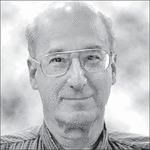 "I knew Dave for many years, as he was a staple at most eastern US coin shows, venturing to the FUN show and the ANA, wherever it happened to be. Dealing in world coins, he built up a following in modern world coins and sets, also dealing in foreign exchange, as well. He also will be missed by his clients and colleagues."
"I knew Dave for many years, as he was a staple at most eastern US coin shows, venturing to the FUN show and the ANA, wherever it happened to be. Dealing in world coins, he built up a following in modern world coins and sets, also dealing in foreign exchange, as well. He also will be missed by his clients and colleagues."
Jeffrey S Zarit writes:
"I did business with him for more than 40 years. He had he own way of doing that. Last time I saw him I asked him why he carried so much weight in mostly modern silver coins (capsulgeld another colleague called them). He had no answer.
I went to his home once, and he asked what kind of music I liked. You see, he had hundreds or maybe thousands of CD's, DVD's, records, cassettes, and the like. Although I saw him selling CD's in Baltimore (I also bought some), I never knew he had so much music.
Like myself, he was an old time dealer choosing to do business his way, and not change much. We both remembered how business was done 20-30-40 years ago and he was reluctant to change. Never saw him with very many slabbed coins, just wasn't his style. And that was fine. A person with integrity and honor, I shall miss him."
Thanks, everyone. -Editor
To read the earlier E-Sylum article, see:
DAVID R. GOTKIN (1944-2022)
(https://www.coinbooks.org/v25/esylum_v25n13a11.html)
Guess the Price of the Eliasberg 1898 Quarter
Ron Guth posted a video challenging viewers to guess the price of the Eliasberg 1898 Quarter coming to market this week. -Editor
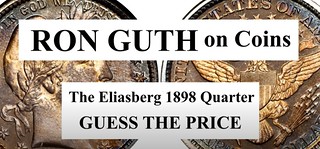 The Eliasberg Quarter Dollar is coming back onto the market after a quarter of a century. The big question is "What will it sell for?"
The Eliasberg Quarter Dollar is coming back onto the market after a quarter of a century. The big question is "What will it sell for?"
The person who guesses closest to the actual price (hammer price plus buyer's premium) without going over will win a 2022 Redbook. Only guesses received by midnight PST on April 4, 2022 will qualify. The coin sells on April 5 and the winner will be announced shortly thereafter.
This contest is open to all U.S. citizens and participation is free.
To watch the video, see:
The Eliasberg 1898 Quarter - Guess the Price
(https://www.youtube.com/watch?v=5Dlg5FM3sL0)
Countermarks Sans Coins
David Pickup writes:
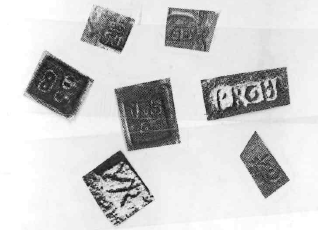 "Archaeologists have discovered a hoard of countermarks which are not with the coins. This is unusual as countermarks are usually on coins. It is believed that these were either trial strikes, the ancient countermarker could not obtain host coins to stamp, or simply the person missed the coin when stamping.
"Archaeologists have discovered a hoard of countermarks which are not with the coins. This is unusual as countermarks are usually on coins. It is believed that these were either trial strikes, the ancient countermarker could not obtain host coins to stamp, or simply the person missed the coin when stamping.
"In ancient times coins were sometimes countermarked for use by Legions or to refer to a new emperor. In these cases where only the countermark is left and not the coin – probably the ancient coin maker ran out of coins."
The Cheshire Cats of numismatics... -Editor
COLLECTING ZIP CODE NOTES
Tom Kays submitted this piece on a hot new paper money specialty - zip code notes. Thanks. -Editor
Hot Collectible Delivers Zippy Fun from Philately to Notaphily
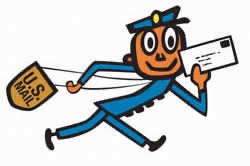 Mr. ZIP (a.k.a.
Mr. ZIP (a.k.a. Zippy
) was introduced to America in 1963 with the Zone Improvement Plan of the United States Post Office. According to Wikipedia Mr. ZIP featured prominently alongside the musical group
The Swingin Six
in a variety show that the Post Office used to explain the importance of using ZIP Codes. There are more than 40,000 ZIP codes in use today. Rather than using just the name of a city and state, Zip Codes added five digits to mail addresses of which the first three digits specify a particular Sectional Center Facility for mail processing while the last two digits specify a postal zone within a city. According to Reader's Digest, besides Beverly Hills, CA 90210, the most famous ZIP codes include ‘60606' for Chicago, ‘70130' for New Orleans, and ‘33162' for Miami.
Notaphilists have long searched for unusual serial numbers on US Currency including low serial numbers, Star notes, solids, radars, repeaters, binaries, and birthday notes. A hot new collectible among Young Numismatists (YNs) to add to your currency search list are ZIP Code Notes. Zip Code Notes already have a low serial number leading with three zeros, followed by a valid 5-digit ZIP code, which further grounds the note to a specific geographic place. As with other special serial number notes, the more ‘the stars align,' the more powerful the connection and more valuable the note. Of extra value are ZIP Code Notes for cities located within the same Federal Reserve District as issued the note and especially for series 1963 to 1983 notes issued before the ZIP+4 improvement added one too many numbers to mailing addresses that currency serial numbers cannot accommodate.
For example, the ultimate ‘stars aligned' ZIP Code Note might be a $1 series of 1963-B Barr Note
from the Chicago Federal Reserve District with Chicago Zip Code Serial Number 00060606, making it also a binary serial number. So, what's in your wallet? Let Mr. ZIP remind us to avoid spending valuable Zip Code Notes for mere face value. May something zippy be enshrined in your collection.
PCGS BEGINS CERTIFYING JAPANESE FANTASY COINS
This press release discusses the new PCGS practice of certifying Japanese fantasy coins. -Editor
PCGS BEGINS CERTIFYING JAPANESE FANTASY COINS WITH KAGIN'S AUCTION OF THE HESSELGESSER COLLECTION TO BE THE FIRST AVAILABLE FOR COLLECTORS
 PCGS has begun certifying Japanese fantasy coinage in a first for the rare coin market. Japanese fantasy issues were minted for hundreds of years from the warring states period through the 1900's.
PCGS has begun certifying Japanese fantasy coinage in a first for the rare coin market. Japanese fantasy issues were minted for hundreds of years from the warring states period through the 1900's.
These rare and intriguing issues will make their certified debut as part of the Robert Hesselgesser Collection of Japanese and Provincial Coinage being auctioned by Kagin's Auctions April 16, 2022.
The Hesselgesser Collection encompasses issues that have history going back to the late 1500's during the warring states period, post-unification 1601 issues, and later. The collection includes all shapes and sizes of hammered gold/silver Japanese fantasy coins created over a time span of a few hundred years.
In addition to the Japanese coinage, this on-line only auction will feature sections of World Gold Coins, U.S. Gold and California Fractional Gold Coinage.
To reserve your catalog or for more information for the Kagin's auction of the Hesselgesser Collection and additional rare coins, please contact Kagin's Auctions by email at info@Kagins.com, by phone at 888-8KAGINS (888-852-4467) and online at Kagins.com.
PRINCETON ADDS THEODOTOU BYZANTINE COINS
Princeton University has made another major acquisition for its numismatic collection. Here's the announcement. Thanks to Alan M. Stahl, Curator of Numismatics for passing along the news. Congratulations. -Editor
Byzantium, Heraclius, 610-641, gold solidus struck in Constantinople, 632-641, depicting the emperor Heraclius and his two sons.
Princeton University Library's (PUL) Numismatic Collection nearly tripled its Byzantine coin collection when it acquired 11,256 Byzantine coins from the estate of Dr. Chris B. Theodotou on March 8, 2022. The acquisition adds to the 5,280 Byzantine coins of the Peter Donald collection, acquired in 2016. Both collections were acquired with support from the Friends of Princeton University Library, while the Seeger Center for Hellenic Studies provided half the funding for these two acquisitions. Together with previous holdings, Princeton now has the largest Byzantine coin collection in the world.
The coins, which are primarily issues of the Byzantine Empire between C.E. 500 and 1453, were collected by Theodotou between 1979 and 1987. According to Curator of Numismatics Alan Stahl, Theodotou was both a friend and collecting rival of Donald.
It was, in fact, while the two men were going from one coin dealer to another in London in 1987 that Theodotou suffered a fatal heart attack,
said Stahl. The collection was then managed by Theodotou's widow, Helen, until her death in 2013. When the heirs read that Princeton had acquired the Donald Collection in 2016, they contacted us to see if we were interested in purchasing their collection as well,
said Stahl.
Though the Donald collection added considerable depth to the Library's Numismatics holdings, it lacked any gold coins of the centuries before 1204, which Peter Donald had sold previously. Stahl noted that the Theodotou collection adds 350 gold coins, 305 silver coins, nearly 11,000 bronze coins, 300 lead seals, and 11 coin weights. Both the Donald and the Theodotou collections were carefully compiled by individuals who sought examples of all known issues (as well as some hitherto unknown) and avoided duplication of common issues,
said Stahl. With these two collections added to our previous holdings of Byzantine coins, we can now lay claim to having the largest and most representative collection of Byzantine coinage in the world. This will complement our strong faculty and other resources in Byzantine studies to confirm the University's leadership in the teaching and research of this important field of history and culture.
Conventional knowledge would suggest that gold is better than silver, but in the case of the Byzantine Empire, silver items are generally rarer. All of the new acquisitions, however, speak to preserving the empire's culture, as few documents or examples of secular material culture remain since its disappearance. The Byzantine court was famous for its highly codified system of display of rank through clothing, and the coins give us excellent sources for this study,
explained Stahl. The inclusion of 300 personal lead seals in the Theodotou collection opens a whole new area for research at Princeton in the lives of individuals below the level of imperial office.
According to Dr. Charlie Barber, Donald Drew Egbert Professor of Art & Archaeology, the Theodotou additions will create opportunities for new and diverse research projects. Political and economic history have been granted a material ground from which to develop analyses,
Barber said. Art historians can map the changing iconographies of power. Religious studies can contemplate the political play of the holy. We are truly fortunate to have a resource that can embrace the interests of so many and that can be put into conversation with communities and scholarly strengths already present at Princeton.
Stahl mentioned the coins from Heraclius' reign from 610 to 641 C.E. as notable examples of the stories the collection can tell. During his leadership, the Byzantine Empire was attacked by both the Sasanian Persians and the Arab. Adding to his status as a usurper of imperial power, these challenges created a need for him to spend much of his reign restoring legitimacy, a process which is detailed on the coins.
A recent post-doctoral fellow at the Seeger Center for Hellenic Study came to the numismatic collection to examine in detail the presentation of Heraclius on his coinage for a book he was writing on the reign,
Stahl recalled. Though we could show him examples from several periods in the reign, we lacked any gold solidus of the first few years as emperor, when he depicted himself alone in military garb; we now have three examples of this issue.
"We value greatly our longstanding partnership with the Princeton University Library," said Dimitri Gondicas, Stanley J. Seeger '52 Director, Seeger Center for Hellenic Studies and Lecturer in the Council of the Humanities and Hellenic Studies. "Central to our mission is to build world-class Hellenic Collections and make them accessible to faculty, students, and visiting scholars. Our contribution towards the acquisition of the Theodotou Collection was made possible by the Stanley J. Seeger Hellenic Fund, in honor of the 40th anniversary of Hellenic Studies at Princeton.
In keeping with PUL's mission to facilitate world-class research, the Numismatic Collection has collaborated with the Seeger Center for Hellenic Studies to establish and jointly fund a term position for a scholar who will catalog the Donald and Theodotou collections and create a shared open access platform to display the Byzantine coins held by Princeton and other institutions.
To read the complete article, see:
New PUL Acquisition: the Chris and Helen Theodotou Collection
(https://library.princeton.edu/news/general/2022-03-17/new-pul-acquisition-chris-and-helen-theodotou-collection)
2022 CHICAGO MONEY TALKS SPEAKERS WANTED
E-Sylum readers are a smart, curious, sharing group of numismatists - perfect for speaking about their areas of expertise. Those of you who are members of the ANA should consider speaking at this summer's convention. Here's the press release. -Editor
Money Talks Speakers Wanted for Chicago World's Fair of Money
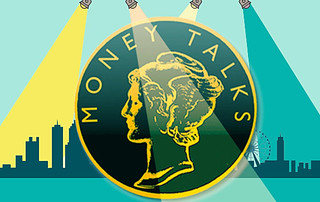 American Numismatic Association (ANA) members are encouraged to share their ideas and research with fellow hobbyists by delivering a Money Talks presentation at the 2021 World's Fair of Money® in the Chicago suburb of Rosemont, Aug. 16-20 at the Donald E. Stephens Convention Center.
American Numismatic Association (ANA) members are encouraged to share their ideas and research with fellow hobbyists by delivering a Money Talks presentation at the 2021 World's Fair of Money® in the Chicago suburb of Rosemont, Aug. 16-20 at the Donald E. Stephens Convention Center.
Those interested in giving a Money Talks presentation should submit an online proposal at money.org/numismatic-events/money-talks. Proposals are due no later than Saturday, April 30. The talks will take place Thursday Aug. 18 and Friday Aug. 19.
The informative 30- to 45-minute Money Talks are presented by some of the hobby's most noted authorities and allow collectors to share their expertise with the numismatic community. Presentations from previous shows include Siege Notes: The Currency of War,"
Strategies to Dispose of Your Collection
and Curious Currency of the World.
Money Talks presentations should be accompanied with digital images. Contact Sam Gelberd, the ANA's numismatic educator, at (719) 482-9846 for additional information.
Proposals can be submitted online or emailed to sgelberd@money.org.
The annual World's Fair of Money is considered the biggest week in numismatics. The event traditionally features expansive educational forums led by notable speakers sharing their numismatic expertise; exhibits of rare treasures from private collectors and the American Numismatic Association's Money Museum; hundreds of dealers buying and selling numismatic items in all price ranges; and one or more auctions.
For more information, or to apply, see:
Money Talks Numismatic Lectures
(https://www.money.org/numismatic-events/money-talks)
VOCABULARY TERM: IMPRESSED DESIGN
Here's another entry from Dick Johnson's Encyclopedia of Coin and Medal Terminology. -Editor
Impressed Design. An added piece of metal or other very hard substance which by intent is laid on the surface of a blank or partially struck medal and is pushed into its surface by the blow of the press and the striking of the dies. Impressed objects are much like an inlay – appearing below the surface – by placing it there before the final blow (this is easy to do with open face dies, but difficult in coining). Impressed objects are subject to flaking off, so care must be taken in their handling. When such an object is not inlaid by design it is an anomaly called impressed error (see next entry).
The first evidence of this occurred in 1692. Trial halfpennies and farthings of William and Mary were struck with impressed metal shapes. A halfpenny exists with a mullet-shaped or circular tin center impressed in a copper coin; or an 8-pointed star in copper impressed in a tin coin. The farthings had a ring of brass impressed in a copper coin. According to C. Wilson Peck, of the British Museum, the reason is unknown why these few trials were made. A similar ancient technique was used in Etheopia as early as AD 380, and in China for a special 5,000 ch'ien coin in AD 7
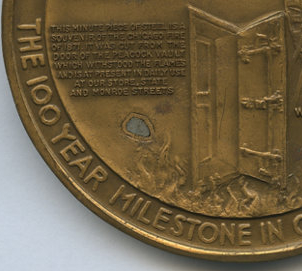 This is the method of manufacture for an occasional relic metal medal in modern times. An example is the C.D. Peacock 100th Anniversary Medal of 1937. This medal contains a minute piece of the firm's steel safe door impressed into the lower reverse field. The safe had survived the 1871 Chicago Fire and was still in use in 1937.
This is the method of manufacture for an occasional relic metal medal in modern times. An example is the C.D. Peacock 100th Anniversary Medal of 1937. This medal contains a minute piece of the firm's steel safe door impressed into the lower reverse field. The safe had survived the 1871 Chicago Fire and was still in use in 1937.
References:
NC7 {1960} Peck, pp 158-9.
See also:
1937 Medal Chicago C.D. Peacock Centennial, 100th Anniversary, Eglit-439 Uncertified. Comes With Original Case....
(https://coins.ha.com/itm/expositions-and-fairs/1937-medal-chicago-cd-peacock-centennial-100th-anniversary-eglit-439-uncertified-comes-with-original-case/a/132018-30077.s)
To read the complete entry on the Newman Numismatic Portal, see:
Impressed Design
(https://nnp.wustl.edu/library/dictionarydetail/516129)
THE BOOK BAZARRE
MORE ON BRUCE W. SMITH
Last week
American Numismatic Biographies author Pete Smith submitted Query: Who is Bruce Smith?
-Editor
The first to respond was John Mutch:
"Bruce Smith suffered a debilitating stroke several years ago and has been out of communication since then. I have been in touch a couple of times with his daughter who has said that he is "doing okay and progressing" in his recovery, although I personally think she is being optimistic. He did not publish his Missouri tokens book; he did have a working draft that I think he shared with a few others."
Scott Semans added a little more:
"In addition to his Missouri token research, his Chinese numismatic work also came to a stop. The Wisconsin Bruce who (re?)joined ANA in Feb. 2004 is certainly the same person. Perhaps his membership had lapsed.
"I visited him and wife Ruth about a year ago in Sheboygan, WI, where he still lives. He had a stroke in Feb., 2019 and while his memory and speech are adequate, he has reading and mobility challenges which prevent him from pursuing the numerous research projects he had started over the years. He has voluminous files and incomplete publications, mostly hand-written index cards and clips, though some digital files in catalog or text format, mostly relating to aspects of Missouri exonumia and banking history, and all aspects of Chinese numismatics. He published many articles over the years in World Coins, World Coin News, and probably TAMS Journal.
"He worked for several coin dealers, including William L.S. Barrett of Montreal, over a long numismatic career, as well as holding more mundane positions, though his primary interest was always numismatic research and writing. He pursued but did not complete a doctorate in Chinese Studies from Harvard, then spent several years in China prior to the "tiananmin square massacre" of mid-1989 when he returned to the US and worked for me until early 1992. He did the cataloguing for the Daniel K.E. Ching Sale, which, along with Superior's Irving Goodman sale that same weekend, were the first large public auctions to focus almost exclusively on Chinese numismatics. Most recently he worked remotely with J.S. Lee of Champion Numismatics in Taiwan, helping locate, research, and catalog important collections of Chinese machine-struck coinage, and editing Lee's magazine, Journal of East Asian Numismatics, which continues as a slicker version of his earlier self-published journal of the same name.
"I'm not aware of any book publications in his name, though could be wrong about that. Under Colin Bruce at Krause Numismatics he was responsible for creating the China section of the Standard Catalog of World Coins, and probably other Asian sections as well."
Pete Smith adds:
"Thanks to Al Doyle at the ANA who confirmed that the Bruce W. Smith who joined the ANA in 2004 is the same individual as the one who joined in 1974.
"Thanks also to Sam E. Coudin, Howard Daniel, Ron Guth, Jim Moores, Yosef Saar and Bruce H. Smith for their contributions."
Thanks, everyone. We wish Bruce and his family the best. -Editor
To read the earlier E-Sylum article, see:
QUERY: WHO IS BRUCE SMITH?
(https://www.coinbooks.org/v25/esylum_v25n13a17.html)
HARVEY STACK'S NUMISMATIC FAMILY, PART 118
Stack's Bowers has a backlog of the late Harvey Stack's numismatic memoir articles and will continue publishing them. In this one Harvey completes his discussion of the auction sales of 1994, beginning with the James A. Stack collection. -Editor
In October 1994, Stack's was pleased to offer a major part of the famous collection formed by James A. Stack, Sr. (no relation to our family). As explained when telling of earlier offerings by Stack's in 1975, 1989 and 1990, Stack's was privileged to offer for sale portions of this important collection. After his father's death, James Stack, Jr. took over the collection and decided that it should be offered in sections because the total value at the time would exceed any other collection he researched, and this might limit in the "spending power" of collectors and dealers.
Therefore in 1975 Stack's was consigned the quarter and half dollar collections, virtually complete, with all dates and mints in exceptional choice conditions. Many of the coins came from collections that Stack's sold at auction and had pedigrees going back for decades. In 1989 Stack's was consigned the half dimes and half cents, together with other minor sets, mostly in Mint State and Proof and including popular die varieties. Both these sales attracted specialists from all over the United States looking to add high quality items to their collections. In 1990, James Stack, Jr. consigned to us the virtually complete collection of U.S. dimes (lacking the unique 1873-CC) featuring die varieties and of impressive quality. Even specialist collectors like Alan Lovejoy, whose cabinet we sold, did not have the overall quality of dimes as were found in the Stack Collection.
James A. Stack, Sr.'s family were traders in the commodity markets of New York, and he became a noted operator. His wife had died in the 1930s and he moved into the Roosevelt Hotel, next to Grand Central Station. This was within three blocks of Stack's on 46th Street. He became interested in coins, and after a few visits to our shop became an avid student and collector of coins. He loved finding varieties and high quality pieces and endeavored to complete different series as he became enamored with them. He introduced his son James, Jr. to collecting and they had wonderful times together studying and collecting.
My father, Morton, became a very close friend of James, Sr. People who knew both were always surprised that there was no direct kinship between the two. They shared a similar emigration story, and both men were 5 feet 8 inches tall, both were stocky, both had round faces, and both wore dark blue suits with vests. They looked like relatives. It was almost like a family reunion each time they got together, and their friendship brought great pleasure to both.
James, Sr. learned that Stack's had been involved with the Eliasberg Collection, in the 1940s – a collection that eventually became the only complete U.S. coin collection ever built. Mr. Stack was very interested in this achievement and set high goals for his collection, helped by the fact that at the time he was buying, a number of very important cabinets were coming to market. He thought he would attempt to put together as complete a set of United States gold coins as was possible, and early on he learned from my father and uncle that Stack's had recently bought the extensive collection (hoard) of E.H.R. Green from the Chase Bank. This accumulation was rich in early gold and would become a great source for James Stack, as well as for others collecting at the same time.
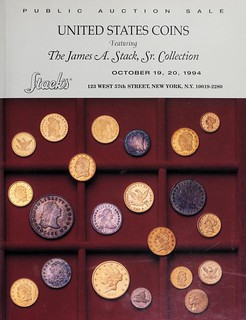 Our October 1994 offering opened with half cents and continued in the United States copper, nickel and silver series through silver dollars. These series were mostly complete and in Proof or Mint State. These may have been the coins that James A. Stack, Jr. originally collected with the help of his father, that were kept with the entire Stack Collection.
Our October 1994 offering opened with half cents and continued in the United States copper, nickel and silver series through silver dollars. These series were mostly complete and in Proof or Mint State. These may have been the coins that James A. Stack, Jr. originally collected with the help of his father, that were kept with the entire Stack Collection.
Moving into gold coins, the gold dollars were complete. The quarter eagles started with both varieties of the 1796, were complete through 1808 and virtually complete from 1821 to 1929, with most varieties and with the rare Dahlonega and Charlotte coins. The quality was very high, with the highlight being the 1841 "Little Princess" quarter eagle. The three-dollar gold coins were not complete and in mostly AU grade, but there were some rarities and provided bidders with a great source for high quality examples in this series.
Then followed a nearly complete collection of superb United States half eagles, many of which had been acquired from Stack's, B. Max Mehl and other dealers. Highlights included a prooflike 1795 Small Eagle along with its Large Eagle companion. The run continued with 1796, three varieties of 1797, a Mint State 1798 Large Eagle, issues from 1799 through 1818 (not including the 1815), the extremely rare 1819, and two varieties of 1820. Later issues began with two early types of 1834 and then were virtually complete in both date and various mints through 1929, with many of the Philadelphia Mint coins in brilliant Proof and the branch mint pieces in Mint State. It was one of the choicest collections of half eagles that had been offered at auction for decades and attracted specialists to the sale and established record prices. Then followed small collections of U.S. eagles and double eagles, as well as a denomination and type set of Bechtler coinage. It was a great sale, a pedigree that is still noted on coins to this day.
As the year was drawing to a close, we offered several estate collections of United States coins in a sale that crossed the block on the last day of November and the first day of December. Included were selections from the estates of R.E. Solomon (sold for the benefit of the American Numismatic Society), of Lester Merkin (a well known coin dealer who operated in New York City, a few blocks from Stack's West 57th Street offices), of John W. Hancock, Jr., who specialized in U.S. type coins in all metals and of Rabideau T. Wilder, a specialist in coins of the Charlotte Mint and other southern issues. This combined sale of 1,738 lots preceded a convention held in New York the following week and was a great source for a variety of collectors.
On December 7-8, 1994, Stack's conduct the auction for the New York International Fall Convention. The bourse had dealers from the United States and overseas and became a great annual event. Our sale contained 1,412 lots of gold and silver coins, starting with 271 Greek and Roman, followed by a collection of seldom-offered Anglo-Saxon coinage, and then by a collection featuring five centuries of British coinage. The sale continued the next day with a specialize collection of the coins of France (nearly 300 lots), followed by an extensive offering of world gold and silver coins. The attendance that this convention sale attracted was large and very active.
In addition to our public auctions, in 1994, Stack's presented three large mail bid sales through our Coin Galleries division. It was a very productive year for Stack's as we continued to offer numismatic material in all series at auction, as well as serving clients who chose to buy and sell through our New York shop.
To read the complete article, see:
Growing up in a Numismatic Family: Part 118
(https://www.stacksbowers.com/News/Pages/Blogs.aspx?ArticleID=growing-up-in-a-numismatic-family-part-118)
To read the earlier E-Sylum article, see:
HARVEY STACK'S NUMISMATIC FAMILY, PART 117
(https://www.coinbooks.org/v25/esylum_v25n12a15.html)
BRING HONEST ABE TO PAN
Great coin shows and numismatic events don't happen by themselves. Numismatists and numismatic organizations must chip in and provide support. For a planned event at next month's PAN show, funds are being sought to cover the expenses to bring the superb Abraham Lincoln impersonator Dennis Boggs to town for the show. -Editor
Announcing the Bring Honest Abe to PAN
Fund-raising Event
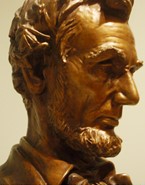 We need your Support
To raise the Funds needed to
Engage Abe to be a part of
The CIVIL WAR MONEY & MEMORABILIA
SHOWCASE & other PAN Activities!
We need your Support
To raise the Funds needed to
Engage Abe to be a part of
The CIVIL WAR MONEY & MEMORABILIA
SHOWCASE & other PAN Activities!
The Pennsylvania Association of Numismatists (PAN) and No Small Change
(hosting the Civil War Money and Memorabilia Showcase) are teaming up to bring Honest Abe
(a.k.a. Dennis Boggs of Tennessee) back to the upcoming PAN Coin Show – May 19 thru 21 – in Monroeville, PA. The Showcase will provide Abe with the platform to address all of the important ways in which money and minting changed to meet the unprecedented demand for the cash needed to pay for the exigencies of war.
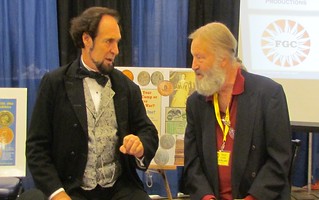 In October of 2021, Abe Lincoln was interviewed by R.J. Lank about topics such as the approval of 3 new mints during the height of the War: Denver in '62, Carson City NV in '63 and little known The Dalles, Oregon in ‘64.
In October of 2021, Abe Lincoln was interviewed by R.J. Lank about topics such as the approval of 3 new mints during the height of the War: Denver in '62, Carson City NV in '63 and little known The Dalles, Oregon in ‘64.
Organizers of the Civil War Showcase are working closely with PAN to raise an additional two thousand dollars – PAN will match every $2 in donations with its own $1 in matching funds. Contact either Becky Rush at cwshowcase@no-small-change.org or Pat McBride (PAN) pancoins@gmail.com for more details. (Also visit PAN's website at pancoins.org.) All contributions are tax-deductible. Sponsors are also being sought to support the Civil War Showcase and its mission. (No fundraising platform has been established yet for this event, so contact us!)
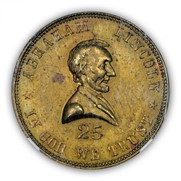 This rare coin at left – marked with
This rare coin at left – marked with 25
and the motto In God We Trust
was thought to be – by some – a game piece or a pattern coin. Scholars have determined it was a celebratory coin (privately minted) – the 25 representing the number of states that voted for Lincoln in 1864. It is exceptionally unusual in that features In God We Trust
which was authorized for US coinage in that same year.
To donate, see:
https://pancoins.org/donate-to-pan/
ATLAS NUMISMATICS APRIL 2022 SELECTIONS
Atlas Numismatics has updated their website with 164 new coins, medals, and tokens at fixed prices. Selections include the following items. -Editor
1067216 | GREEK. SICILY. Syracuse. Dionysios I. (Tyrant, 407-367 BC). Struck circa 405-370 BC. AR Decadrachm. NGC Ch. AU (Choice About Uncirculated) Strike 4/5 Surface 4/5 Fine Style. 33.5mm. 43.41 gm. [S?-??-?]?-[S]-?O?. Head of Arethusa left, wearing wreath of grain ears, triple-pendant earring, and pearl necklace; pellet below chin, four dolphins swimming around / [AT?A]. Charioteer, holding kentron in extended right hand and reins in left, driving fast quadriga left; above, Nike flying right, crowning charioteer with wreath held in her extended hands; below heavy exergual line, [military harness, shield], greaves, cuirass, and crested Attic helmet, all connected by a horizontal spear. Gallatin dies R.XXI/J.II; Scavino 59 (D18/R31); HGC 2, 1299; SNG ANS 375 (same dies); BMC 179 (same dies).
Unsigned dies in the style of Euainetos. Attractive high-relief surfaces.
Ex Lanz Auction 156 (6/2/2013) Lot 62. Includes NGC photo certificate.
To read the complete lot description, see:
https://atlasnumismatics.com/1067216/
1066632 | CENTRAL AMERICAN REPUBLIC. 1835-NG M AR 8 Reales. NGC MS64. Guatemala City. Five mountains, sun has large, full face / Tree divides denomination. KM 4.
Deep cabinet patina.
To read the complete lot description, see:
https://atlasnumismatics.com/1066632/
1067505 | HUNGARY. Leopold I. 1694-K-B AV Ducat. NGC MS66. Kormoczbanya (Kremnitz mint). 3.47gm. LEOPOLD: D: G: R - S: A: G: H: B: R E X. Leopold standing right divides mint mark in inner circle / · AR · AV · DV · BV · M · - MOCO · TY · date. Madonna with child at right. KM 151; ÉH-992a.
To read the complete lot description, see:
https://atlasnumismatics.com/1067505/
1067106 | NEW ZEALAND. George V. (King, 1910-1936). 1935 AR Crown. NGC PR66. Crowned bust left / Crown above standing figures shaking hands. KM 6; Dav.-433.
Struck to commemorate the Treaty of Waitangi, the accord signed in 1840 between representatives of Britain and Maori chiefs of the North Island of New Zealand. From a mintage of just 364 Proofs issued in sets and 104 issued individually.
To read the complete lot description, see:
https://atlasnumismatics.com/1067106/
1066900 | SWITZERLAND. Schaffhausen. 1865 AR Confederation Shooting Taler of 5 Francs. NGC MS67+. Seated Helvetia with young son of William Tell holding apple pierced by arrow. / Cantonal Arms in Gothic frame. KM X S8; Richter 1054; Dav.-382.
For the Federal Shooting Festival held in Schaffhausen. Mintage of 10,000. $5,750
To read the complete lot description, see:
https://atlasnumismatics.com/1066900/
Updates to their online inventory are issued monthly.
For more information and to sign up for the firm's monthly newsletter, visit: atlasnumismatics.com
SIMMONS APRIL 2022 TOKEN & WEIGHT AUCTION
Simmons Gallery is holding an auction of tokens and coin weights this week. Here's a summary from their emailed announcement, followed by some items that caught my eye. Check it out. -Editor
Token & Coin Weight Auction
Our current auction starts online this Tuesday 5 April from 12 noon. So still time to bid and to check how you're doing if you've already bid. If you bid yesterday, Saturday, you need to check your bids as there was an interruption of service on the website.
Apart from tokens tickets and passes we also have a couple of collections of coin weights, rocker balances and scales.
Lots of interesting stuff!
- BUFS British Unofficial Farthings,
- mining lamp and work checks,
- pub tokens, refreshment checks
- sports related passes,
- barber checks
- and a miscellany of other British & world tokens too.
- British & foreign coin weights and scales
Everything is illustrated online.
Lot 1: Oxford Wine Merchant
MB102001 Unofficial farthing Banbury, Oxford Gazey Wine merchant
The Cheapest House in the Country! -Editor
To read the complete lot description, see:
https://simmonsgallery.co.uk/shop/tokens/mb102001-unofficial-farthing-banbury-oxford-gazey-wine-merchant/
Lot 3: Old Bond Street Jeweller
MB102003 Unofficial farthing Bath, Hamper, jeweller, Old Broad St. W140
A nice, simple design. -Editor
To read the complete lot description, see:
https://simmonsgallery.co.uk/shop/tokens/mb102003-unofficial-farthing-bath-hamper-jeweller-old-broad-st-w140/
Lot 29: Robertson's Half Guinea Hat Token
MB102029 unofficial farthing Carlisle, Robertson, Half Crown 10/6 Hat ref. Farthing 9.14 W1320,
To read the complete lot description, see:
https://simmonsgallery.co.uk/shop/tokens/mb102029-unofficial-farthing-carlisle-robertson-half-crown-10-6-hat-ref-farthing-9-14-w1320/
Lot 46: London Hatter Token
MB102046 unofficial farthing London Geo. Carter, Hatter advert c.1890 boys sailing in hat!
Another hatter piece. Great image! -Editor
To read the complete lot description, see:
https://simmonsgallery.co.uk/shop/tokens/mb102046-unofficial-farthing-london-geo-carter-hatter-advert-c-1890-boys-sailing-in-hat/
Lot 123: Charlie Chaplin Theatre Token
MB102123 ticket Manchester, Gaiety Theatre Charlie Chaplin The Gold Rush cinema
A piece of early movie history. -Editor
To read the complete lot description, see:
https://simmonsgallery.co.uk/shop/tokens/mb102123-ticket-manchester-gaiety-theatre-charlie-chaplin-the-gold-rush-cinema/
Lot 262: British Coin Weight
MB102262 British coin weight W-a, Portuguese Double Joe, crowned cartouche L S 3 12
An attractive piece. -Editor
To read the complete lot description, see:
https://simmonsgallery.co.uk/shop/weights/british-coin-weights/mb102262-british-coin-weight-w-a-portuguese-double-joe-crowned-cartouche-l-s-3-12/
STACK'S BOWERS SPRING 2022 AUCTION SELECTIONS
Here are some items that caught my eye in the Spring 2022 Stack's Bowers sale catalogs. -Editor
Lot 1118: 1825 Erie Canal Completion Medal
1825 Erie Canal Completion Medal. By Edward Thomason of Birmingham, England. Copper. Choice Mint State.
81.5 mm. Obv: Forest god Pan seated with sea god Neptune within inner circle, outside of which along the upper border is the inscription UNION OF ERIE WITH THE ATLANTIC. Rev: New York State Arms within inner circle, legend around border gives dates of commencement and completion. The following year the motifs and inscriptions were copied by Charles Cushing Wright and used to produce an American made version in much smaller 44 mm size. That newer version is now aggressively collected by so-called dollar enthusiasts as HK-1. White metal impressions from Thomason's dies are often disturbed by heavy contact marks, rim bumps and tin pest; copper impressions such as this are far rarer in an absolute sense and, in fact, this is the first example in this composition that we can recall handling. An exceptionally appealing, problem free example with rich chocolate-brown patina to surfaces that are sharply struck with a lively satin finish.
Provenance: Ex Zabriskie, lot 645. Collector envelope and tags with provenance notation included.
Important medal with an impressive pedigree. Beautifully executed. -Editor
To read the complete lot description, see:
1825 Erie Canal Completion Medal. By Edward Thomason of Birmingham, England. Copper. Choice Mint State.
(https://auctions.stacksbowers.com/lots/view/3-VKZQ4/1825-erie-canal-completion-medal-by-edward-thomason-of-birmingham-england-copper-choice-mint-state)
Lot 1254: Double Struck 1787 Fugio Cent
1787 Fugio Cent. Pointed Rays. Newman 11-B, W-6785. Rarity-4. UNITED STATES, 4 Cinquefoils--Double Struck--MS-63 BN (PCGS).
Newman 11-B is one of the scarcer Bank of New York hoard varieties in the Fugio cent series, the 1948 census counting only 60 coins. The present example is plated on page 70 of Jeff Rock's 2016 update to Rob Retz's Fugio Copper Notes, where it is described as, "A spectacular multiple offset strike exhibiting an early reverse die state without any signs of obverse clash marks." This is not quite true, since even without the aid of a loupe one's eye will discern faint clash marks from the rings in the obverse field areas around both dates. The clashing is not heavy, however, and the die state is still earlier than Newman C. Exceedingly rare as a major error in the Fugio series, and easily among the most desirable Newman 11-Bs extant, this coin would serve as a highlight in the finest specialized collection.
A spectacular double striking error. -Editor
To read the complete lot description, see:
1254 1787 Fugio Cent. Pointed Rays. Newman 11-B, W-6785. Rarity-4. UNITED STATES, 4 Cinquefoils--Double Struck--MS-63 BN (PCGS).
(https://auctions.stacksbowers.com/lots/view/3-VL10X/1787-fugio-cent-pointed-rays-newman-11-b-w-6785-rarity-4-united-states-4-cinquefoils-double-struck-ms-63-bn-pcgs)
Lot 1521: Off-Center Buffalo Nickel
Undated San Francisco Mint Buffalo Nickel--Struck 45% Off Center--MS-63 (NGC).
This interesting piece is struck off center to 5 o'clock, with the result that the date area is (far) off the planchet. The mintmark area on the reverse is present, however, and although it is a bit distended the S is identifiable. Lustrous where struck with pretty pinkish-silver iridescence throughout.
Another great error coin; there are two off-center Buffalos in the sale. -Editor
To read the complete lot description, see:
Undated San Francisco Mint Buffalo Nickel--Struck 45% Off Center--MS-63 (NGC).
(https://auctions.stacksbowers.com/lots/view/3-VL3R8/undated-san-francisco-mint-buffalo-nickel-struck-45-off-center-ms-63-ngc)
Lot 2102: 1822 Capped Bust Half Dollar
1822 Capped Bust Half Dollar. O-106. Rarity-2. MS-65 (PCGS). CAC.
A highlight of the Bust half dollars from the Abigail Collection, this is a glorious Gem that really needs to be seen to be fully appreciated. Both sides are originally and attractively toned with iridescent olive and pinkish-gold peripheral highlights to otherwise sandy-silver surfaces. Intensely lustrous and fully struck, a noteworthy absence of even trivial blemishes further enhances this coin's incredible appeal. The die state is the earliest known for the 1822 Overton-106 attribution, the obverse with six die lines (as made) at the border below star 13. Writing in the Autumn 2021 revision to his AMBPR for Bust half dollars, Stephen J. Herrman reports a single MS-66 as CC#1 for this attribution. The present example is tied for CC#2 with two MS-65s in that listing, one each for the O-106 and O-106a die states.
A beautiful high-condition example of a classic U.S. coin. -Editor
To read the complete lot description, see:
1822 Capped Bust Half Dollar. O-106. Rarity-2. MS-65 (PCGS). CAC.
(https://auctions.stacksbowers.com/lots/view/3-VKR0H/1822-capped-bust-half-dollar-o-106-rarity-2-ms-65-pcgs-cac)
Lot 3015: 1909-S VDB Lincoln Cent
1909-S Lincoln Cent. V.D.B. MS-67 RD (PCGS).
A landmark example of this perennially popular, key date issue from the first year of the Lincoln cent series. Untroubled by even the most trivial blemishes, the surfaces approach the zenith of numismatic perfection. They are fully lustrous and frosty with outstanding mint color in vivid reddish-orange. Razor sharp in striking detail with extraordinary eye appeal.
Among the most famous coins in American numismatics and one that even non-collectors have sought ever since its introduction, the 1909-S V.D.B. Lincoln cent has stood the test of time in terms of popularity. The centennial of Lincoln's birth in 1909 provided an opportunity for Theodore Roosevelt to continue with his "pet crime" to revitalize the nation's coin designs. Sculptor and medalist Victor David Brenner had designed some medals for Roosevelt in 1908 and also created a bronze plaque featuring the now familiar profile of Lincoln. Brenner suggested to Roosevelt that the cent would be an excellent choice to commemorate Lincoln, especially since Longacre's Indian design was half a century old by that time. Brenner modified the bust from his plaque for the obverse and placed a pair of durum wheat stalks on the reverse surrounding the denomination, a simple but very distinctive design. Brenner placed his initials at the very bottom on the reverse, a decision that would come to be controversial. With some modifications, by late May models were prepared for approval by newly inaugurated President William H. Taft with the final version approved by Secretary of the Treasury Franklin MacVeagh on July 14, for an August 2 release date. The Philadelphia Mint had a head start on production of the new coins, while San Francisco did not receive the dies until late June. Long lines formed for the new coins and they quickly proved to be a hit with the public. Almost immediately the initials on the reverse prompted questions and soon their seemingly prominent placement proved to be too much; within days new dies were prepared with the initials removed entirely.
We generally avoid discussing prices and grades, but the condition of this piece is astounding - who wouldn't want one like this for their collection? -Editor
To read the complete lot description, see:
1909-S Lincoln Cent. V.D.B. MS-67 RD (PCGS).
(https://auctions.stacksbowers.com/lots/view/3-VJEGF/1909-s-lincoln-cent-vdb-ms-67-rd-pcgs)
Lot 3151: 1797 Capped Bust Right Eagle
1797 Capped Bust Right Eagle. Heraldic Eagle. BD-2, Taraszka-8. Rarity-4+. AU-58 (PCGS). CAC. OGH--First Generation.
Bass-Dannreuther 2 is the first of three die marriages that the Mint used to strike 1797 Capped Bust Right eagles of the newly introduced Heraldic Eagle reverse type. It is Style 1 of this type; the head punch is the familiar Draped Bust motif from Robert Scot's original hub of 1795, but the reverse is from a John Smith Gardner hub with a long thin neck to the eagle. This is the only die variety of this style. The remaining two marriages of the 1797 Heraldic Eagle display reverse eagle punches that, although they are also from Gardner hubs, are characterized by long thick neck (BD-4) and short thin neck (BD-3) eagles. The estimated mintage for this issue as a whole is in the range of 8,750 to 12,500 pieces. BD-2 vies with BD-4 as the most plentiful variety of the issue, although with no more than 100 coins believed extant (per John W. Dannreuther, 2006), the scarcity cannot be denied. Early eagles as a group are scarce and Mint State survivors are even more elusive, making this an important bidding opportunity worthy of serious consideration.
This coin represents the typically encountered obverse die state of the 1797 BD-2 variety, identifiable by prominent die cracks through the second digit 7 in the date. The base of that digit is joined to the border by a single prominent crack, which has now developed into a small cud. There are two cracks within that digit, the left crack continuing only to the lower serif while the right crack, with die crumble evident, continues through the top of the 7 to the base of Liberty's bust. The latest reverse die state of this variety known to Dannreuther is Die State b, with a rust lump on top of the second letter T in STATES. The author, however, does write: "State c, terminal, may exist, as this is the only use of this die." The present example is in a later state than known to Dannreuther when he created his book in 2006, and we have attributed it as Reverse Die State c. The die has been lapped, removing the rust lump on top of the second letter T in STATES, thinning some of the letters in the legend UNITED STATES OF AMERICA, removing the tiny die rust lumps in the field between the words STATES and OF and the sharp spike-like projection from the second denticle to the left of the letter O in OF, and truncating many of the dentils, especially those along the upper border. In particular, the dentils above the letter E in STATES are noticeably shorter and weaker. The die crack between the words STATES and OF to cloud 5 is bolder than seen on the Die State b example offered above, and it extends faintly into the star field.
Great early type coin. -Editor
To read the complete lot description, see:
1797 Capped Bust Right Eagle. Heraldic Eagle. BD-2, Taraszka-8. Rarity-4+. AU-58 (PCGS). CAC. OGH--First Generation.
(https://auctions.stacksbowers.com/lots/view/3-VJFSL/1797-capped-bust-right-eagle-heraldic-eagle-bd-2-taraszka-8-rarity-4-au-58-pcgs-cac-ogh-first-generation)
Lot 3213: 2013 Casascius 1 Bitcoin
2013 Casascius 1 Bitcoin (BTC). Brass. Loaded (Unredeemed). Firstbits 13EjAeG9. Series 2. 28.5 mm. MS-66 (PCGS).
An impressive example of this historic issue which represents the final year of production by Casascius (Mike Caldwell). It displays lovely olive-gold patina with hints of warmer honey color throughout. Overall lustrous and without any notable abrasions. At a grade of MS-66, this is the sole finest example certified by PCGS and is a true prize for the advanced crypto enthusiast. It remains fully loaded with a face value of 1 BTC, equivalent to approximately US$38,000 at the time of cataloging (February 2022).
This is a well-traveled example that was purchased directly from Mike Caldwell (Casascius) by our consignor in May 2013 as part of an original roll of 25 coins. Carried as a pocket piece for several months, it was soon sold to a friend circa June 2013 for 100 EUR while on a trip to Germany. It was only recently re-acquired by our consignor in trade for BTC and we are thrilled to be able to offer it publicly in our April sale. It is accompanied in this sale by a 2013 Casascius 0.5 BTC offered in lot 3208 that was acquired as part of the same order from Caldwell. We suggest the possibility that a collector may purchase both lots to keep them together and continue to build upon this shared legacy.
One of the most popular issues of the entire Casascius series, just about 8,350 of the 2013 Series 2 1 BTC were funded in 2013 and 2014. Researcher Elias Ahonen notes that a "2014 [dated] version would have surely been even more numerous had Casascius not ended the sale of pre-funded coins." Issued on a 28.5mm brass planchet, the obverse features the Bitcoin currency symbol at center surrounded by a legend listing the date, denomination, and the Latin phrase "VIRES IN NUMERIS" that translates as "Strength in Numbers." The reverse features a holographic sticker with the firstbits address printed at the center. Beneath the holographic sticker is the private address that allows the owner to redeem the value of the bitcoin once the sticker is peeled away.
Once scoffed at as a novelty, these physical embodiments of electronic money only recently became part of the numismatic auction scene. Their value of course, is driven by the hidden codes contained within, which unlock access to the digital currency. A colorful example. -Editor
To read the complete lot description, see:
2013 Casascius 1 Bitcoin (BTC). Brass. Loaded (Unredeemed). Firstbits 13EjAeG9. Series 2. 28.5 mm. MS-66 (PCGS).
(https://auctions.stacksbowers.com/lots/view/3-VJGJ2/2013-casascius-1-bitcoin-btc-brass-loaded-unredeemed-firstbits-13ejaeg9-series-2-285-mm-ms-66-pcgs)
Lot 4005: 1799 Draped Bust Dollar
1799 Draped Bust Silver Dollar. BB-163, B-10. Rarity-2. MS-63 (NGC). OH.
As one of the two most frequently encountered die marriages of the 1799 dollar, alongside the BB-166, the BB-163 is a perennial favorite with type collectors at all levels of preservation. However, the vast majority survive in lower circulated grades up through only Very Fine. Q. David Bowers suggests that "this variety must have been well distributed in the channels of commerce, or there may be some other explanation why so few high grade coins were saved." Bowers goes on to note that "the offering of a Mint State coin should be a major event". Acquired by our consignor in September 1997 and held privately since, this offering will certainly prove to be a "major event" for the many advanced specialists who will be competing for this treasure.
What a beauty! -Editor
To read the complete lot description, see:
1799 Draped Bust Silver Dollar. BB-163, B-10. Rarity-2. MS-63 (NGC). OH.
(https://auctions.stacksbowers.com/lots/view/3-VJVVJ/1799-draped-bust-silver-dollar-bb-163-b-10-rarity-2-ms-63-ngc-oh)
DNW APRIL 2022 SALE HIGHLIGHTS
Dix Noonan Webb will offer a selection of coins of the Emperor Hadrian in their upcoming April 13, 2022 sale. Here's the press release. -Editor
1900 years ago, in AD122, Emperor Hadrian began to build his impressive wall in Northern England to protect his territory from the Caledonians and others. Therefore it seems fitting in this anniversary year that Mayfair-based Auctioneers Dix Noonan Webb will offer 75 coins from his reign in their auction of Ancient and Islamic Coins and Antiquities on Wednesday, April 13, 2022.
The highlight of the group is an Aureus (gold coin), dating from AD 133-5, portraying a bare headed draped bust on one side, and on the other: Roma in military attire with left foot on a helmet and holding a spear. The fine coin is expected to fetch £4,000-5,000.
Elsewhere a very rare coin from the French Occupation of Egypt (1798-1801) marked with the letter ba – believed to stand for Bonaparte
will be included. The coin, which is estimated at £2,000-2,600, is from the first part of the Collection of the Hon. Robert Erskine which consists of 175 lots of Early Persian, Islamic and Crusader Coins.
Also of interest in the sale is a variety of Greek Coins from various properties. Greek coins are very popular at the moment and among the ones in the sale is a very fine Tetradrachm (silver coin equivalent to four drachmae) from Syracuse in Sicily from the reign of Dionysios I, and dating from circa 399-87. This coin was previously sold in 1933 in the renowned Ars Classica Auction XVI in Lucerne and shows a charioteer driving fast, and a Nike flying above to crown him with a wreath. It is estimated at £2,000-2,600.
For more information, see:
http://www.dnw.co.uk/
WORLD BANKNOTE AUCTIONS PRESENTS SALE 24
Here's the press release for World Banknote Auctions upcoming Live Sale 24. Some beautiful, unusual and scarce notes here. -Editor
This week World Banknote Auctions has now listed Live Sale 24, which closes in two different segments. The first segment, the traditional live sale, closes on April 14, 2022, with live bidding that day at 1 PM Eastern / 10 AM Pacific. The following day, on April 15 at 1 PM Eastern / 10 AM Pacific an additional segment closes in a timed auction (no live bidding, although lots may be extended if a bid is received 10 minutes before closing). Live Sale 24 offers a total of 834 lots from around the world, with highlights including an advanced selection of Middle Eastern notes from a singe consignor, classic type notes and modern issues that are among the finest known for their respective grades in the population reports. Some highlights are selected below, the entire catalog can be viewed on the company's website, www.worldbanknoteauctions.com
Lot 24008 is a 10/- Shillings from Australia, undated but issued starting in 1939 (Pick-25a) graded Choice Uncirculated 64 EPQ by PMG. While this note is frequently encountered in circulated grades, finding an original, choice uncirculated example is quite difficult. This particular example features Sheehan – McFarlane signatures in orange, which is the first signature combination for this type. This lot is carries a pre-auction estimate of $400-$500.
Lot 24019 is a PMG Superb Gem Uncirculated 67 EPQ $100 from Belize, dated 1.11.1983 (Pick-50a). The highest denomination of this series (and in fact the highest denomination issued in Belize to this date) this is a challenging type to acquire, especially so at this grade level. One of the classic Queen Elizabeth II portrait notes and an iconic type surely to become a classic one day. It carries a pre-auction estimate of $1,500-$2,000.
Lot 24050 comes from the British Caribbean Territories, a term used loosely for what was traditionally known as the British West Indies, which consisted of a number of British colonies in the Caribbean and South America. Dated 28.11.1950, this is a $20 with the portrait of King George VI (Pick-5) graded Very Fine 20 by PMG. A very scarce type to acquire in any grade, this represented a fairly large sum of money at the time of issue and few have survived to this day. This lot carries a pre-auction estimate of $1,000-$1,200.
Lot 24139 is a Haiti 500 Gourdes dated 1979 (issued 1980-1982) printed on Tyvek (Pick-238a) graded Fine 15 NET (comments for PVC Damage, Annotation) by PMG. The highest denomination of the Tyvek series of Haiti, this is widely considered the first circulating notes on what is now known as polymer. Tyvek as currency was used for a relatively short period as a trial run, but the material proved largely unsuitable for use in tropical climates, such as Haiti. A very difficult note with few offerings at public auction, this note carries a pre-auction estimate of $600-$800.
Lot 24279 is a grand note in both size and appearance. This is a Philippines 100,000 Piso dated 1998 (Pick-190a) graded Superb Gem Uncirculated 68 EPQ by PMG. A commemorative issue celebrating the centennial of the Philippines of which just 1,000 examples were printed, until a few years ago this was the largest banknote ever printed. It has become extremely popular and very difficult to find at this grade level, and this example carries a pre-auction estimate of $6,000-$8,000.
Lot 24289 is a 50 Riyals from the first series of Qatar (Pick-4a) graded Extremely Fine 40 by PMG. A very difficult denomination to acquire in any grade, this is the first time we have been able to offer this denomination in any grade. Surely missing from many advanced collections it carries a pre-auction estimate of $1,000-$1,200.
Lot 24299 is a very scarce specimen from Qatar of the ND (1985) 1 Riyal (Pick-13s) graded Choice Uncirculated 64 EPQ by PMG. Middle Eastern specimens are typically very scarce and in demand, as they were never distributed to collectors and few have come to the market. While this note in issued form is readily available, it is very scarce in specimen format. It carries a pre-auction estimate of $500-$600.
Lot 24368 is a 1968-dated 10 Rupees from the Seychelles (Pick-15a) graded Superb Gem Uncirculated 67 EPQ by PMG. Known as the scum
note, for the writing that is (purposefully) hidden below the turtle on the obverse. Very difficult and popular at this grade level, it carries a pre-auction of $1,000-$1,200.
Lot 24418 is a 100 Dirhams from the ND (1973) series of the United Arab Emirates (Pick-5a) graded Gem Uncirculated 66 EPQ by PMG. While not the highest denomination of the series it is still a very scarce type, particularly at this grade level. As we approach the 50th anniversary of the introduction of these notes to the United Arab Emirates it is important to remember that the economy of the region has vastly improved over the last few decades and as the population of the area has grown more and more people become interested in these notes, making the small number of available notes much more in demand. This particular example carries a pre-auction estimate of $2,500-$3,000.
Lot 24469 is a PMG Superb Gem Uncirculated 67 EPQ example of the unissued 1000 Dong from South Vietnam from the mid 1950s (Pick-4As). This specimen of this iconic note that was never issued into circulation is tied for the finest known in the PMG population report and is a beautiful example of French printing. Original paper wave is seen and the colors are bright and fresh. This lot carries a pre-auction estimate of $15,000-$20,000.
To read the complete article, see:
World Banknote Auctions Presents Live Sale 24
(https://www.worldbanknoteauctions.com/news/world-banknote-auctions-presents-live-sale-24/)
NUMISMATIC NUGGETS: APRIL 3, 2022
Here's a selection of interesting or unusual items I came across in the marketplace this week. Tell us what you think of some of these. -Editor
British Indien 1870
British India 5 Rupees 1870. Neuprägung. 3.89 g. Schl. 911. Fr. 1603a. Prachtexemplar PCGS PR 63.
Nice proof! -Editor
To read the complete lot description, see:
Lot 137. British Indien 1870
(https://www.sixbid.com/en/muenzenonline/9351/indien/7961947/british-indien-1870)
1985 Bursting the Bounds Medal. By Donald De Lue. Alexander-SOM 111.1. Bronze. Choice Mint State.
74 mm x 74 mm, square. Housed in the original box, with information flyer also included.
Great medal. From the Mico Kaufman Estate. In the Stack's Bowers April 2022 Tokens & Medals Collectors Choice Online Auction. -Editor
To read the complete lot description, see:
1985 Bursting the Bounds Medal. By Donald De Lue. Alexander-SOM 111.1. Bronze. Choice Mint State.
(https://auctions.stacksbowers.com/lots/view/3-VT3RC/1985-bursting-the-bounds-medal-by-donald-de-lue-alexander-som-1111-bronze-choice-mint-state)
2004 Brookgreen Gardens Art Medal. She Slave. By Harold (Tuck) Langland, Struck by Medallic Art Co. BG-32. Bronze. Mint State.
76.5 mm. Accompanied by the original descriptive card.
Brookgreen Gardens produces a great annual medal series by top artists. Another nice one in the Stack's Bowers April 2022 Tokens & Medals Collectors Choice Online Auction. -Editor
To read the complete lot description, see:
2004 Brookgreen Gardens Art Medal. She Slave. By Harold (Tuck) Langland, Struck by Medallic Art Co. BG-32. Bronze. Mint State.
(https://auctions.stacksbowers.com/lots/view/3-VT3M3/2004-brookgreen-gardens-art-medal-she-slave-by-harold-tuck-langland-struck-by-medallic-art-co-bg-32-bronze-mint-state)
- Andy Warhol (1928-1987)
- $, 1982
- Screenprint in colors on Lenox Museum Board
- 19-3/4 x 15-5/8 inches (50.2 x 39.7 cm) (sheet)
- Ed. 20/60 (there were also ten artist's proofs)
- Signed and numbered in pencil lower right, with publisher's stamp lower left
- Published by the artist
- Printed by Rupert Jasen Smith, New York
For those who collect money art, Heritage is offering an example of Andy Warhol's 1982 dollar sign print. -Editor
To read the complete lot description, see:
Andy Warhol (1928-1987). $, 1982. Screenprint in colors on Lenox Museum Board. 19-3/4 x 15-5/8 inche...
(https://fineart.ha.com/itm/prints-and-multiples/andy-warhol-1928-1987-1982-screenprint-in-colors-on-lenox-museum-board-19-3-4-x-15-5-8-inches-502-x-397-cm-/a/8078-65083.s)
THE COINAGE OF CLAUDIUS
Mike Markowitz published the latest article in his CoinWeek Ancient Coin Series on the coinage of Claudius. Here's an excerpt - see the complete article online for much more. -Editor
FOLLOWING THE MURDER of demented emperor Gaius (nicknamed Caligula
) on January 24, 41 CE, soldiers found the emperor's 50-year-old uncle, the aforementioned Claudius, hiding behind a curtain in the palace. Escorted to the fortified camp of the Praetorian Guard, the only surviving male of the Julio-Claudian dynasty was proclaimed as Rome's fourth emperor. To ensure their continued loyalty, every man in the elite Guard received a bonus of 15,000 sestertii–equivalent to over 16 years' pay for an ordinary soldier. For English-speaking viewers, the 1976 BBC TV series based on Robert Graves's 1934 novel, I Claudius, is the classic retelling of this story.
Coins of Claudius in gold, silver, and bronze have always been popular with collectors, especially those pursuing a set of the Twelve Caesars
. Many were designed and executed to a high artistic standard, and some are highly sought-after rarities.
A few years after Claudius came to power, a coin issued in both silver and gold celebrated the Praetorian Guard's role in his accession.
Claudius 41-54. Aureus 44-45, Rome. TI CLAVD CAESAR AVG P M TR P IIII laureate bust of Claudius, right / IMPER RECEPT inscribed on the wall of a fortress, emperor holding scepter standing within a columned building, legionary standard to left 7,72g. C. 43; RIC 25; Calicó 361. An elegant and pleasant specimen, extremely fine. NGC Ch AU 5/5, 3/5. Numismatica Genevensis SA > Auction 13 15 November 2021, Lot: 6. Realized: 34,000 CHF (approx. $36,872).
On the reverse, we see a standing figure, sometimes identified as Fides Praetorianum (Loyalty of the Praetorians
) within a fortified camp above the inscription IMPER(atore) RECEPT(o) (The Emperor Received
). An exceptional example of the gold aureus brought over $36,000 USD in a recent Swiss auction. Examples of the silver denarius with this design typically sell for $1,500 to $2,000 and up.
To read the complete article, see:
CoinWeek Ancient Coin Series: The Coinage of Claudius
(https://coinweek.com/ancient-coins/coinweek-ancient-coin-series-the-coinage-of-claudius/)
THE ÉCU DE CALONNE
This Numiscorner.com blog article discusses a rare French silver écu that never entered circulation, and the subsequent écus designed by envraver Jean-Pierre Droz. Here's an excerpt - see the complete article online for more. -Editor
In the series of great reforms which he had in mind, the minister envisioned a project for a silver écu worth 6 livres that he hoped to use to make the currency circulate.
It was thus with this aim that he had trials produced by the Monnaie de Paris over the course of 1786.
Unfortunately, he would leave office before the project reached completion, and the écu de Calonne never entered circulation.
Jean-Pierre Droz, a young Swiss engraver, arrived in Paris at the tender age of just 18. He began to make a name for himself as a medallist in 1783 and subsequently offered his services to the Monnaie de Paris.
Consequently, at the age of 37, he found himself in charge of producing the first examples of the écu de Calonne. And, undeniably, the engraving of these trials demonstrates his extraordinary talent.
Indeed, in addition to its historical dimension, the écu de Calonne is also remarkable as far as its engraving is concerned.
The profile of Louis XVI, in the form of a laurel bust (a rare version without the laurels also exists), is of an unequaled finesse and quite simply sumptuous.
The reverse of the majority of the trials features two Ls elegantly facing each other beneath a crown and framing three fleur-de-lis.
The abandoned écu made such an impact that it was restruck in the 19th century during the Restoration.
To read the complete article, see:
The Écu de Calonne
(https://www.numiscorner.com/blogs/news/the-ecu-de-calonne?)
2007-P WASHINGTON DOLLAR ELONGATED RAY
Tom Koolick recently published a Coin World article about the "Elongated Third Ray" on the 2007-P Washington Dollar. He submitted this report for readers of The E-Sylum, Thanks. -Editor
The 2007-P Washington $ Elongated Third Ray Shines
Originally I had zero interest in the small dollar coins. That was until the nationwide coin shortage occurred and my search for the "W" Washington quarters had proven unproductive. A friend suggested that I start searching through the small Presidential dollars and he sent me a link to his website, "United States Small Dollar Coins and Related Items".
One variety that caught my eye and intrigued me the most was the speculation and possible existence of an "Elongated Third Ray" of the tiara on the 2007-P George Washington issue. This coin was believed to have been found/reported in 2007, the first year of issue. I searched for information on this coin for months on-line and elsewhere for any documentation of a confirmed or attributed example, but nothing was found.
All the information I acquired over these months was merely speculation of its existence. Was it an unintentional die gouge which extended the ray? Was it a scratch? Was the die intentionally modified, altered or manipulated at the mint? No one seemed to have the answer. There was no evidence that this coin had ever been officially recognized or attributed by the top three grading services or the Cherrypickers' Guide.
So, my search began. I found that banks had boxes of these small dollars that none of their customers wanted. After months and months searching through thousands of these Presidential dollars, I found several of this variety. The design of the ray seemed too well formed to be a die gouge. After having been in circulation for 15 years, I realized this variety was still unreported and still could be cherrypicked.
I contacted a number of key players in the variety/error community and showed them the coin for their personal and professional opinions. My non-professional numismatic eyes suggested that the ray was too clear to be anything other than an intentional die alteration or modification at the mint and my aim has been to have it assigned a FS (Fivaz-Stanton) number. With the help, opinions and feedback from many experts in the field, too many to mention, this interesting observation would not have been possible. The tenacity, commitment and due diligence in this effort eventually found its way to recognition and hopefully a listing in the upcoming Cherrypickers' Guide.
ZELENSKY MEDAL SALES TO HELP UKRAINIANS
Mel Wacks commissioned a new medal designed by Jim Licaretz to be sold to raise funds to help Ukrainians. Great idea - nice medal to boot! Please consider adding one to your collection, or purchasing some as gifts. -Editor
100% of Profits from Sale of Zelensky Medals will be Contributed to Help Ukrainians in Their Homeland and as Refugees
100% of the profits from the sale of art medals honoring Ukraine's President Volodymyr Zelensky will be contributed to organizations helping Ukrainians in their homeland and as refugees.
Jim Licaretz, designer of these impressive 3 1/2-inch diameter, very high relief medals is a former sculptor-engraver at the U.S. Mint. Licaretz was motivated to honor the heroic President of Ukraine, just as he commemorated other heroes in the past — such as civil rights leader John Lewis and World War II flying ace Rosie
Rosenthal. The new medals feature a bold portrait of Zelensky, along with his words Our truth is that this is our land
and the state seal of Ukraine.
Licaretz created the original model in resin using a 3-D printer. He then made a mold and cast medals in bonded bronze, each of which Licaretz then hand finished.
No more than 199 Zelensky commemorative medals will be issued, each accompanied by a certificate of authenticity and a stand so that it can be proudly exhibited in a home or office. The cost is $150 plus $15 per order for shipping, with a limit of 3 medals per order. If all medals are sold, a contribution of about $15,000 will be made to help the Ukrainian victims of Russian aggression.
To order, send payment to the non-profit Jewish-American Hall of Fame, 5189 Jeffdale Ave., Woodland Hills, CA 91364, or call 818-225-1348, or pay with PayPal using email address of directorjahf@yahoo.com.
UKRAINE AWARDS MEDAL TO SALTY-TONGUED SAILOR
And here's a medal from the Ukrainian government for a colorful sailor. -Editor
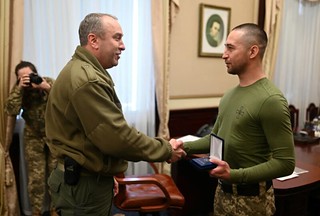 The Ukrainian sailor who told a Russian warship to
The Ukrainian sailor who told a Russian warship to go f–k yourself
as he helped try to defend Snake Island was awarded a government medal in a video posted by Ukraine on Tuesday.
Hero seaman Roman Hrybov received the award For Merits to Cherkasy Region
from Regional Gov. Ihor Taburets.
Hrybov was one of a handful of sailors manning the defenses of Snake Island in the Black Sea during the early hours of Russia's invasion of Ukraine last month.
When Russian naval craft the Valisy Bykov ordered Hrybov and his comrades to surrender, the brave sailor reportedly replied by radio, Russian warship, go f–k yourself.
The reply prompted the Valisy Bykov to bombard the island.
Hrybov and the other Snake Island defenders were initially declared dead, until it became clear they'd been captured by Russian forces. His retort became a rallying cry in the early days of the Ukrainian resistance.
The Valisy Bykov was reportedly destroyed two weeks later by Ukrainian forces defending Odessa.
The captured Ukrainian sailors were freed last week in a prisoner swap, and Hrybov's award ceremony was held soon after.
In an interview with Ukrainian outlet Today, Hrybov's mother said her son had never bowed to anyone.
By the way, I have never in my life heard my son swear at me,
Tatiana Hrybov added.
To read the complete article, see:
Ukraine awards medal to sailor who told Russian ship ‘Go f–k yourself'
(https://nypost.com/2022/03/29/ukraine-sailor-who-told-russian-ship-go-f-k-yourself-gets-medal/)
CHANGE HUNTING IN 2022
I enjoyed Scott Barman's Coin Collector's Blog article about his recent grocery store coin adventure. -Editor
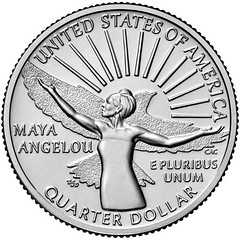 I made a late evening run to the grocery store earlier this week. After picking up a few necessities, I went to the cash register, and three people were huddled around the open draw looking at the coins.
I made a late evening run to the grocery store earlier this week. After picking up a few necessities, I went to the cash register, and three people were huddled around the open draw looking at the coins.
After putting my items on the belt, I asked why there were looking at the coins. One looked up and said they were looking for the Maya Angelou quarter, and another said that they were reading about Angelou in high school when their teacher talked about the quarter.
One looked at me and asked if I knew that the next quarter would honor Sally Ride and started to tell me about Dr. Ride. After I told them that I watched the shuttle launch on television, they thought it was neat that these quarters were in circulation.
They showed no interest in the national parks quarters as they looked at the quarters when one found an Ohio quarter. Although it has the hanging astronaut, I asked if they found the Florida quarter with the Space Shuttle on the reverse.
They realized I understood the quarters and asked if there was a reference to the themes on the quarters. After pointing them to the U.S. Mint website, I told them about the Red Book. I showed them some of the quarter designs on my smartphone and then the Native American dollars.
Aside from not knowing that the U.S. Mint struck dollar coins, I showed them the 2015 Mohawk Iron Workers dollar, a personal favorite. One showed interest and asked if they had created a design for the Code Talkers, and I responded "100 percent" and showed them the 2016 dollar.
Three high school students were now working at a local grocery store, looking at the coins in the cash register for designs representing history. They may not be looking for silver coins like I did in the early 1970s, but it's change hunting looking for something neat.
The more things change, the more they stay the same.
To read the complete article, see:
Change hunting at the local grocery store
(http://coinsblog.ws/2022/04/change-hunting-at-the-local-grocery-store.html)
2023 AMERICAN WOMEN QUARTERS HONOREES
The new women's quarters are getting a great reception, and there are more on the way. Mary Lannin passed along this announcement of the next batch of honorees. Thanks! -Editor
The United States Mint is pleased to announce the following 2023 honorees for the American Women Quarters™ Program:
- Bessie Coleman – pilot, advocate, and pioneer who flew to great heights as the first African American and first Native American woman pilot, as well as the first African American to earn an international pilot's license.
- Jovita Idar – Mexican American journalist, activist, teacher, and suffragist. She devoted her life to fighting against separatist ideologies and sought to create a better future for Mexican Americans.
- Edith Kanaka?ole – indigenous Hawaiian composer, chanter, dancer, teacher, and entertainer. Her mo?olelo, or stories, served to rescue aspects of Hawaiian history, customs, and traditions that were disappearing due to the cultural bigotry of the time.
- Eleanor Roosevelt – first lady, author, reformer, and leader. As chairperson of the Human Rights Commission where she oversaw the creation of the Universal Declaration of Human Rights, and as the first chair of the U.N. Commission on Human Rights, she advocated diligently for the civil liberties and needs of the poor, minorities, and the disadvantaged.
- Maria Tallchief – America's first prima ballerina, she broke barriers as a Native American ballerina who exhibited strength and resilience both on and off the stage.
The range of accomplishments and experiences of these extraordinary women speak to the contributions women have always made in the history of our country,
said Mint Deputy Director Ventris C. Gibson. I am proud that the Mint continues to connect America through coins by honoring these pioneering women and their groundbreaking contributions to our society.
Authorized by Public Law 116-330—the Circulating Collectible Coin Redesign Act of 2020—the American Women Quarters Program features coins with reverse (tails) designs emblematic of the accomplishments and contributions of prominent American women. Contributions come from a wide spectrum of fields including, but not limited to, suffrage, civil rights, abolition, government, humanities, science, space, and the arts. The women honored come from ethnically, racially, and geographically diverse backgrounds. As required by the public law, no living person will be featured in the coin designs, and thus all the women honored must be deceased. The Mint is issuing five coins with different reverse designs annually over the four-year period from 2022 through 2025.
The obverse (heads) depicts a portrait of George Washington originally composed and sculpted by Laura Gardin Fraser to mark George Washington's 200th birthday. Though her work was a recommended design for the 1932 quarter, then-Treasury Secretary Mellon ultimately selected the now-familiar John Flanagan design.
The obverse design is common to all quarters issued in the series. Inscriptions are be LIBERTY,
IN GOD WE TRUST,
and 2023.
As stipulated by the public law, the Secretary of the Treasury selects the women to be honored following consultation with the Smithsonian Institution's American Women's History Initiative, the National Women's History Museum, and the Congressional Bipartisan Women's Caucus.
To read the complete article, see:
United States Mint Announces 2023 American Women Quarters™ Program Honorees
(https://www.usmint.gov/news/press-releases/united-states-mint-announces-2023-american-women-quarters-program-honorees)
COIN DEALER MATTHEW TAVORY
The changing of the guard is proceeding apace on the dealing sides as well as on the making and collecting sides of numismatics. -Editor
Augustus Caesar, the first emperor of Rome, was the first known coin collector. Contemporary coin collecting began during the Renaissance with Italian scholar Petrarch. It quickly became known as the hobby of kings — as only the very wealthy could afford it.
Nowadays, the collectible coin market has gained popularity during the pandemic. A number of young hobbyists are turning the recent coin boom into a business.
Matthew Tavory, 21, has been collecting coins since he was 9 years old. My first coin was a 1936 Wheat penny that I found in my dad's van and I just went down the rabbit hole from there,
Tavory said.
When he was in middle school, his parents took him to a Palm Beach Coin Club show at the Polish American Club in Greenacres.
I got $50 from my parents and they let me loose in this room when they had a big show. I think they figured I was going to come back with some magic beans and it would be the last they ever hear of my coin hobby. I came back with some coins and $100!
Tavory said.
Tavory started selling coins on Instagram in high school. After he graduated, he attended Palm Beach State College for a while. Then, he got a job as a coin grader for the Numismatic Guaranty Corporation, the world's largest and most trusted third-party grading service for coins, tokens and medals. Collectors and dealers tend to pay more for coins graded by NGC.
But when the pandemic hit, Tavory was laid off. He decided to go back to college and finish his degree. Meanwhile, the coin market started to skyrocket.
The popularity and value of coins have shot up exponentially partially due to the pandemic, partially due to factors not related to it entirely," Tavory explained.
His hobby started to turn into a full-time business. Tavory's travel schedule is intense — one week he's in California, a couple weeks after that in Maryland, and then he's off to Colorado Springs. Tavory said he loves the excitement, but admits the constant traveling isn't for everyone.
It's totally worth it! It's helping me pay for college.
Tavory is now a student at Florida Atlantic University majoring in Revolutionary European History. He receives scholarships — including the Florida Bright Futures — but his coin business is paying for the remaining amount that isn't covered.
Tavory lives with his parents and works out of his home office. While his knowledge is extensive in the U.S. coin market, his passion is world coins.
World coins require a lot of research — something a lot of people just getting into the market don't have the patience for,
Tavory said.
He spends hours going through auction records to determine the value of some rare coins.
To read the complete article, see:
A new generation of coin enthusiasts is bringing life to an ancient hobby
(https://www.wlrn.org/news/2022-03-28/a-new-generation-of-coin-enthusiasts-are-bringing-life-to-an-ancient-hobby)
LOOSE CHANGE: APRIL 3, 2022
Here are some additional items in the media this week that may be of interest. -Editor
The Washington Post publishes a Sunday cartoon by Patrick Reynolds called "Flashbacks" that tell local history stories. Today's comic addressed shinplasters and the Postal Currency Act of 1862. I was unable to find a site online to reference. -Editor
From Franklin Noll's blog. Found via News & Notes from the Society of Paper Money Collectors (Volume VII, Number 41, March 29, 2022) -Editor
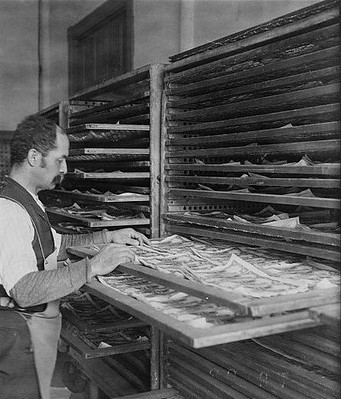 Here we are, drying banknotes in 1908. This was part of the wet-method of printing that continued into the 1950s.
Here we are, drying banknotes in 1908. This was part of the wet-method of printing that continued into the 1950s.
The notes pictured are $2 Silver Certificates, Series 1899. The faces are shown, which means that these are finished notes (except for the surface printing of seals and serial numbers) as the the faces were printed last.
In 1908, the US Treasury was using 100% linen paper, and we can see all the wrinkling that occurs as the paper had been moistened before each printing. After printing, the notes needed to be left to dry to allow the ink to set.
The fact that these are four-subject note sheets also says that the notes were printed by hand on a flatbed press.
It is hard to imagine just how labor intensive banknote production was in the past and the degree of skill that was needed in every step of the process as everything was done by hand.
To read the complete article, see:
Drying Banknotes in 1908
(https://www.franklinnoll.com/blog/drying-banknotes-in-1908)

